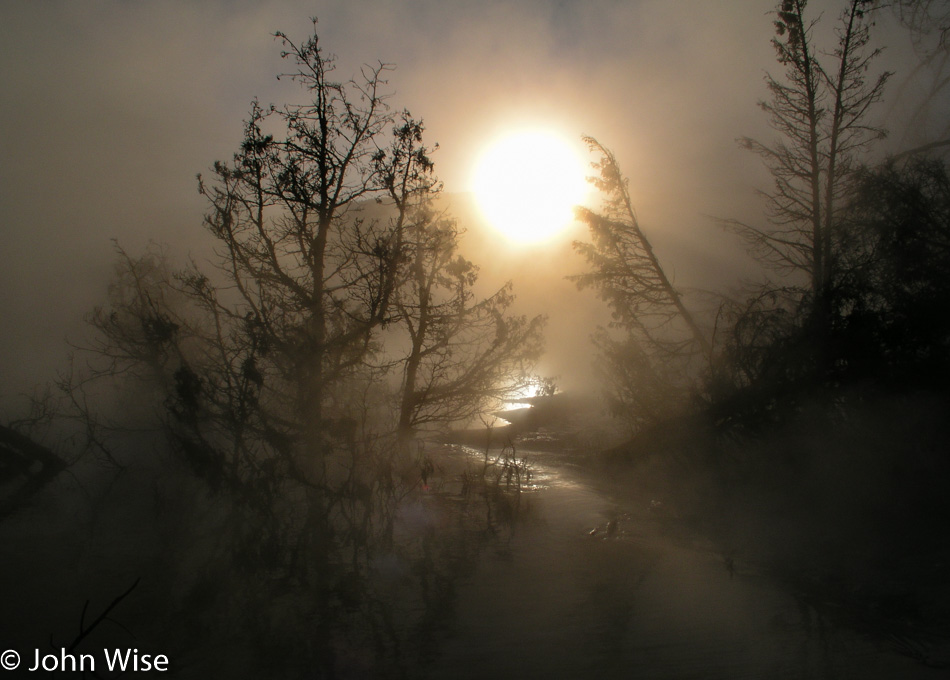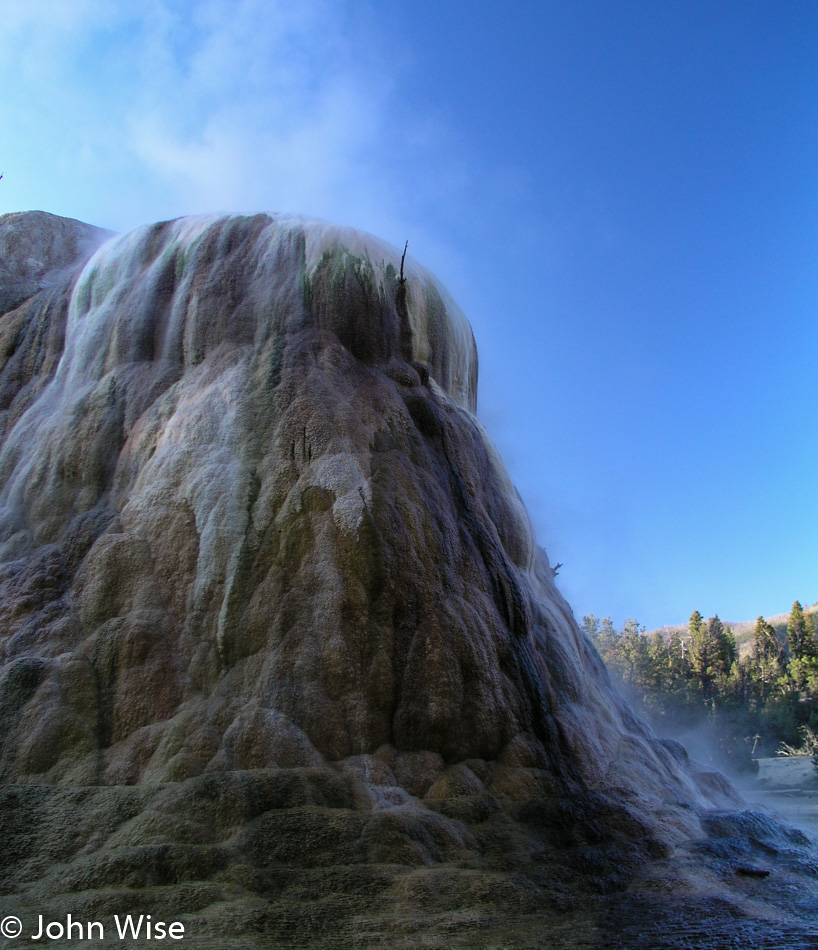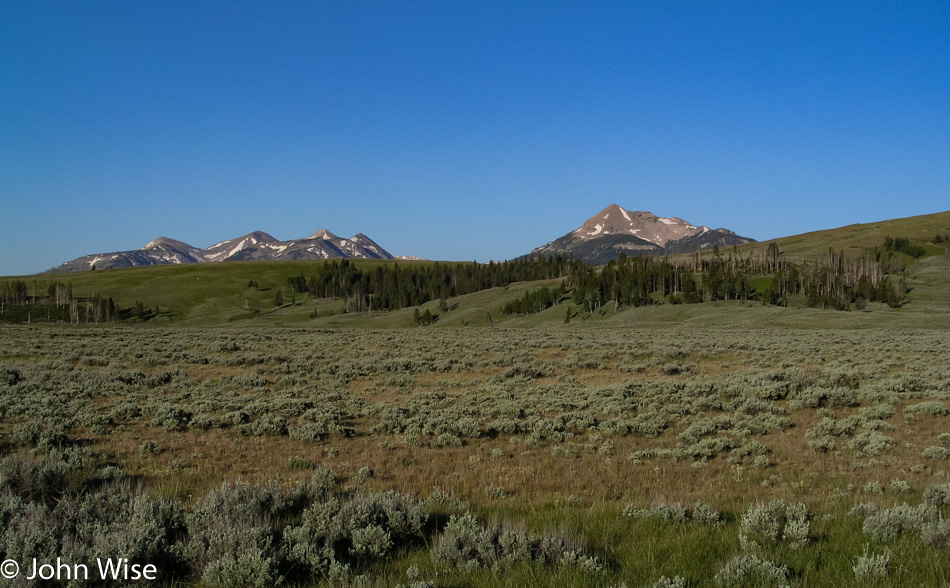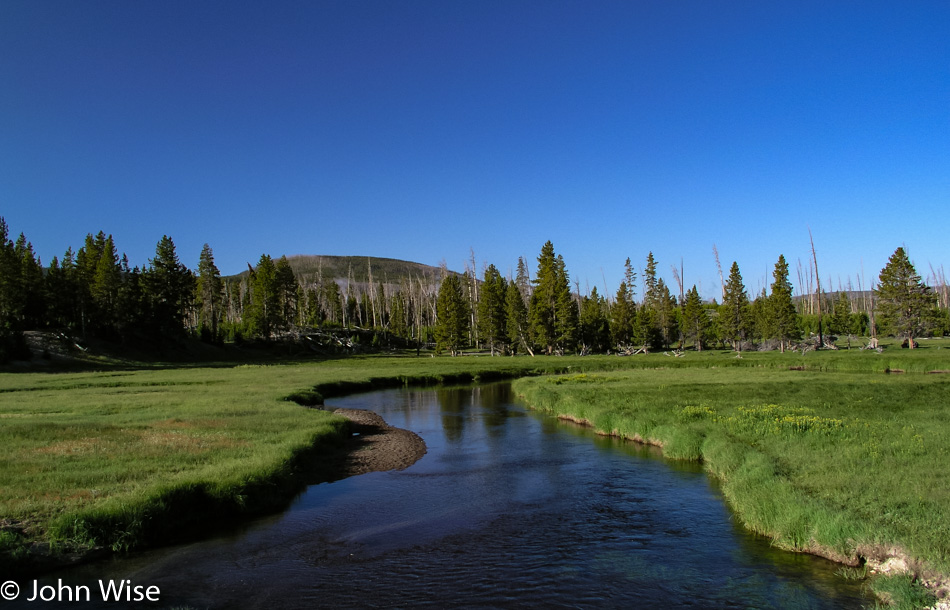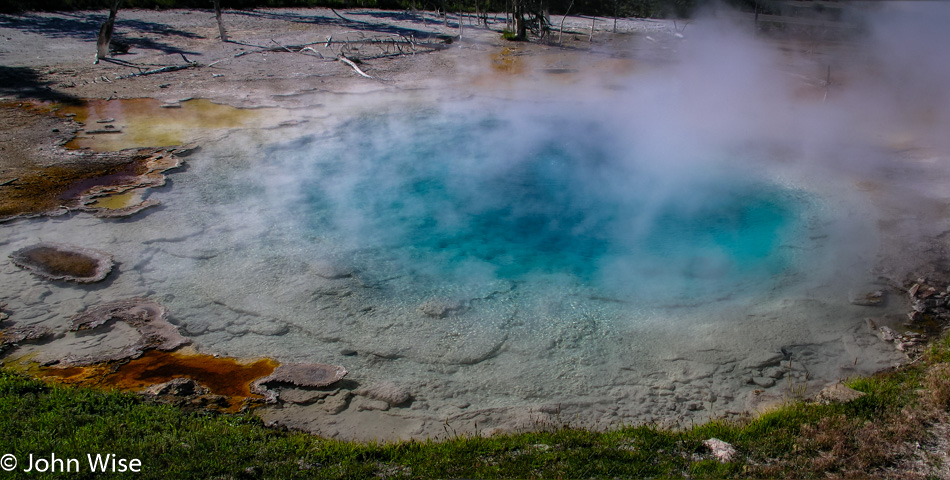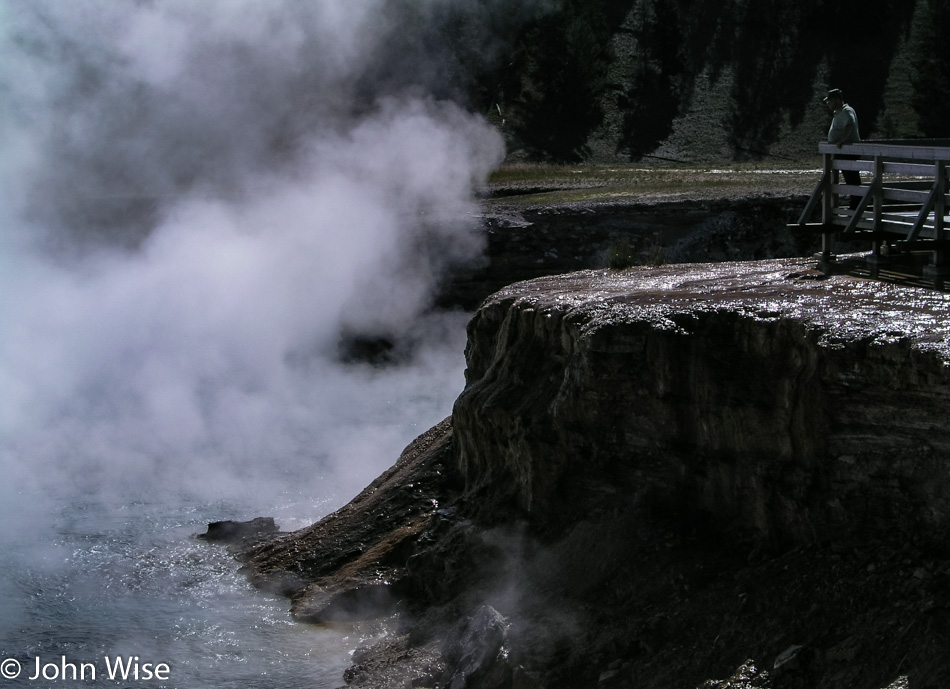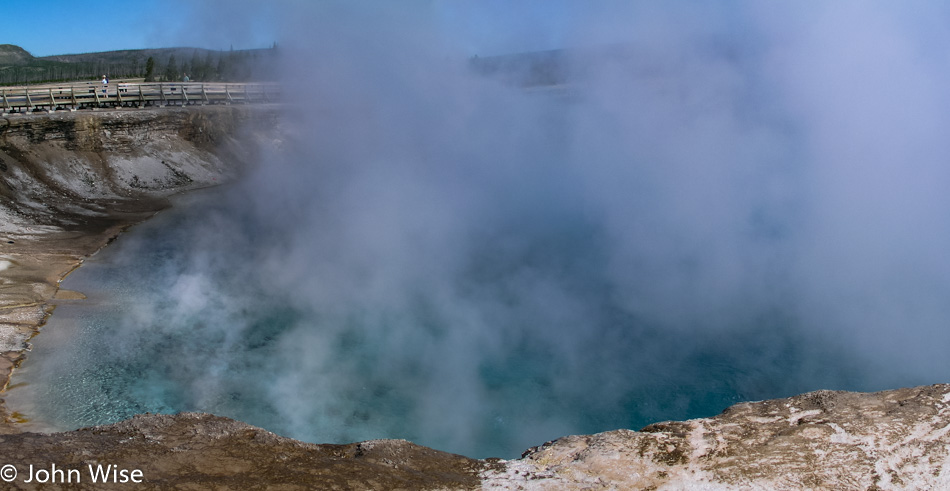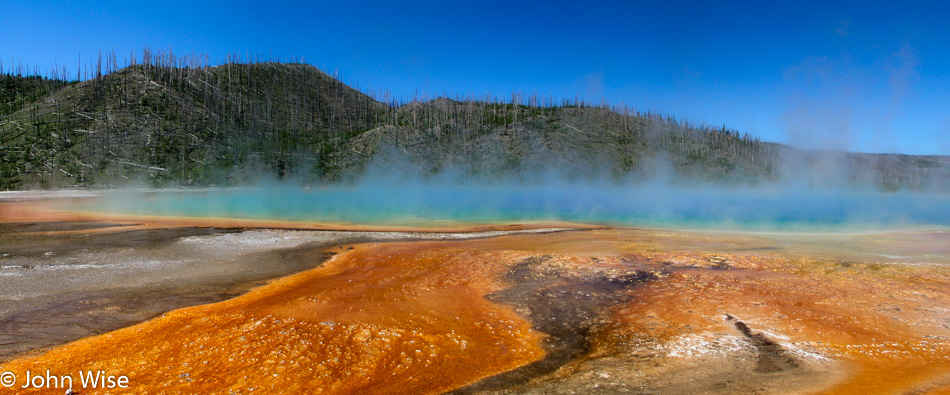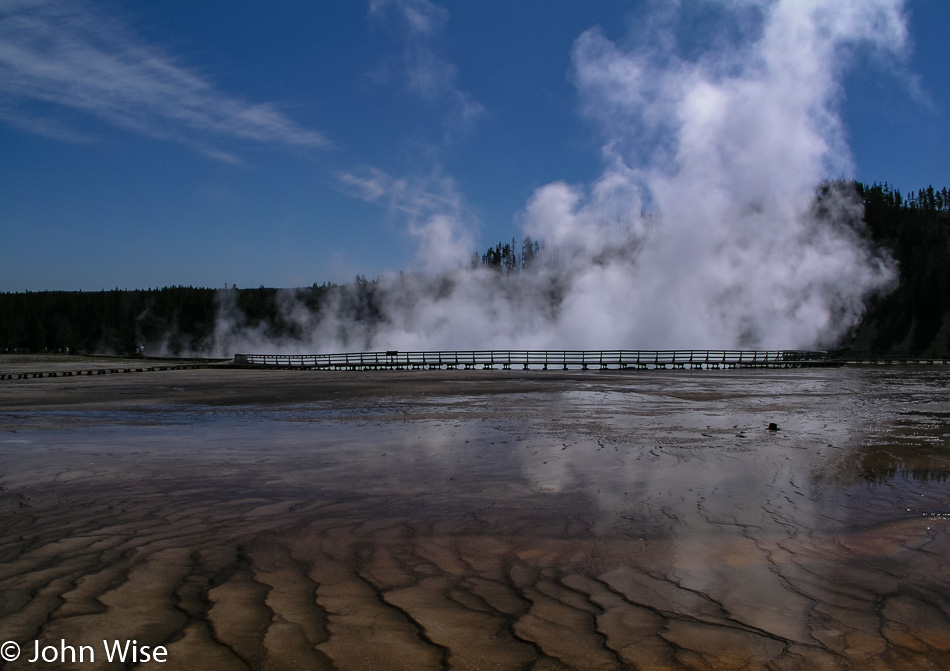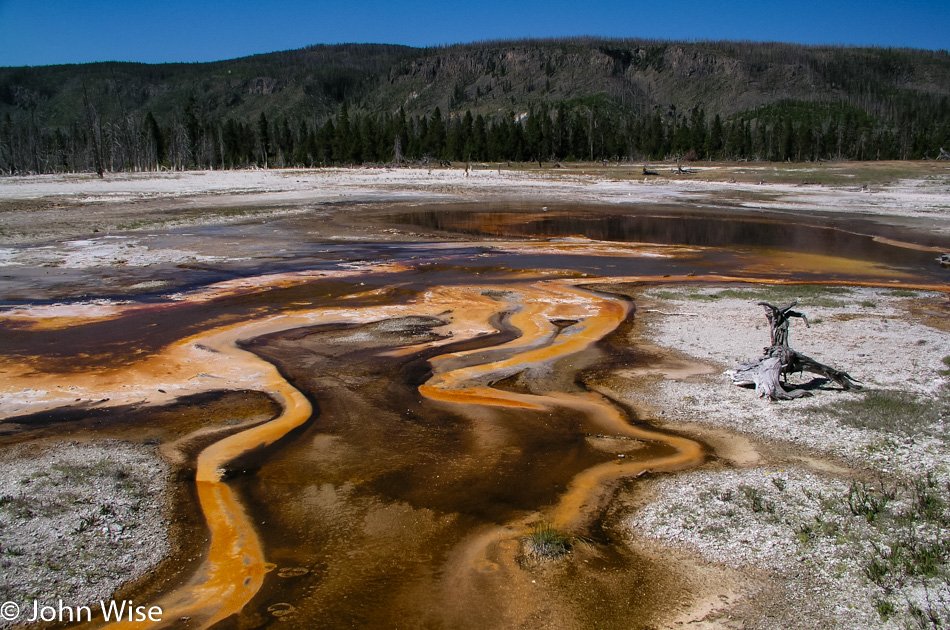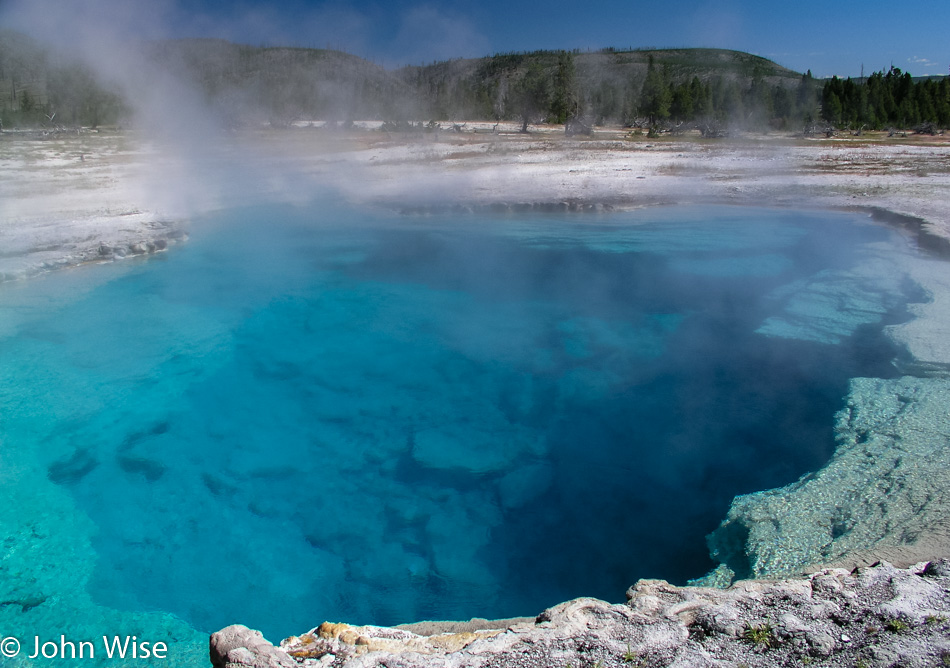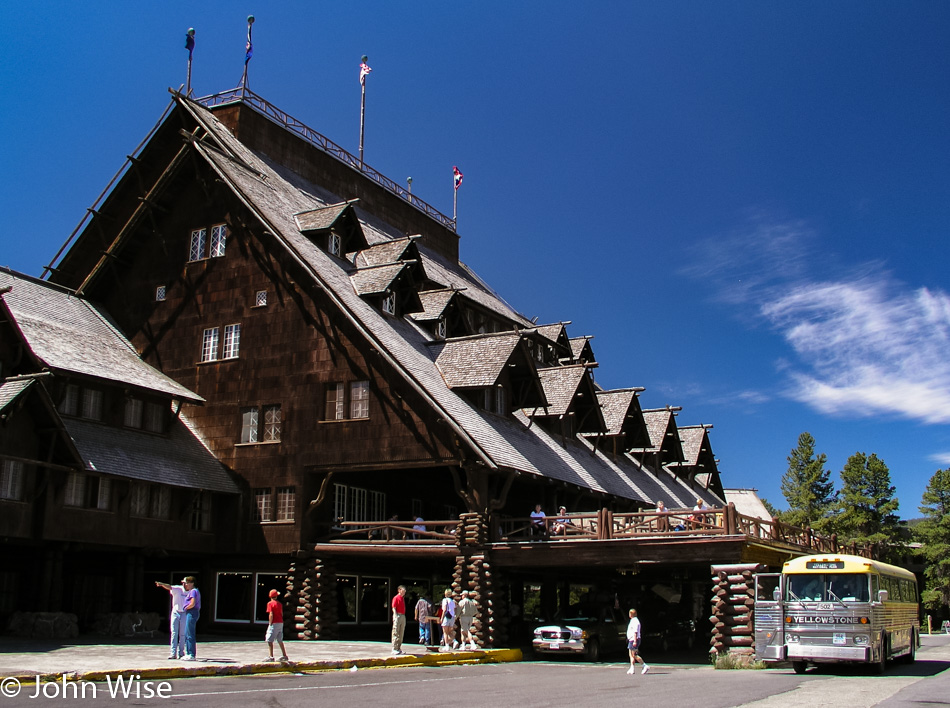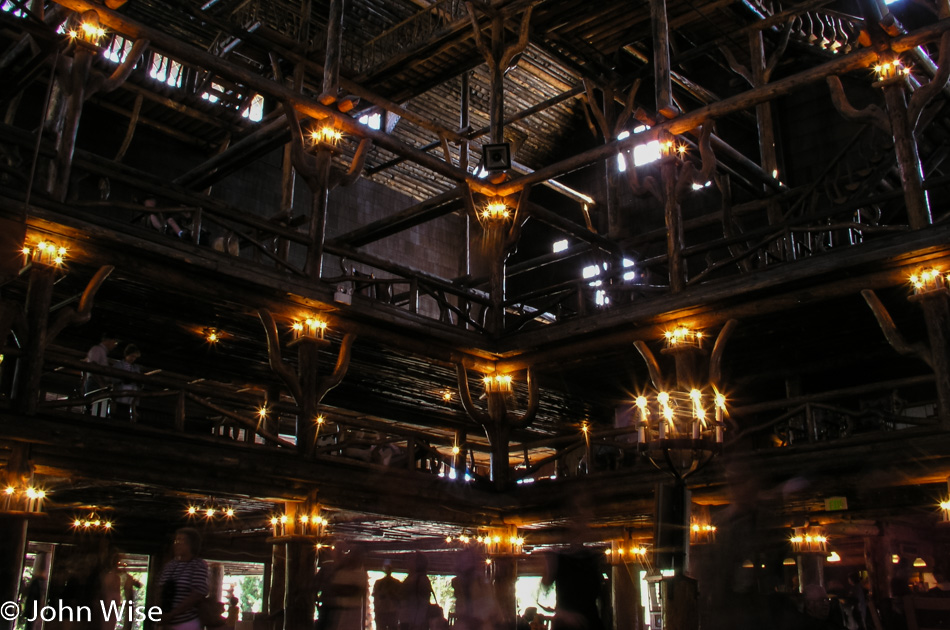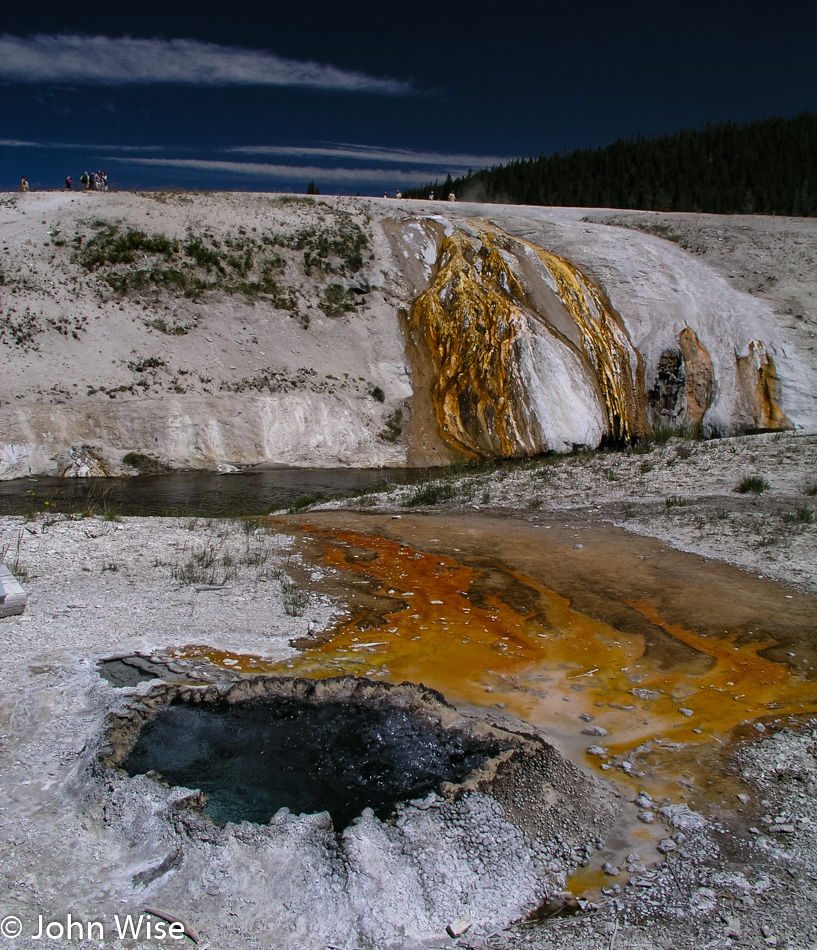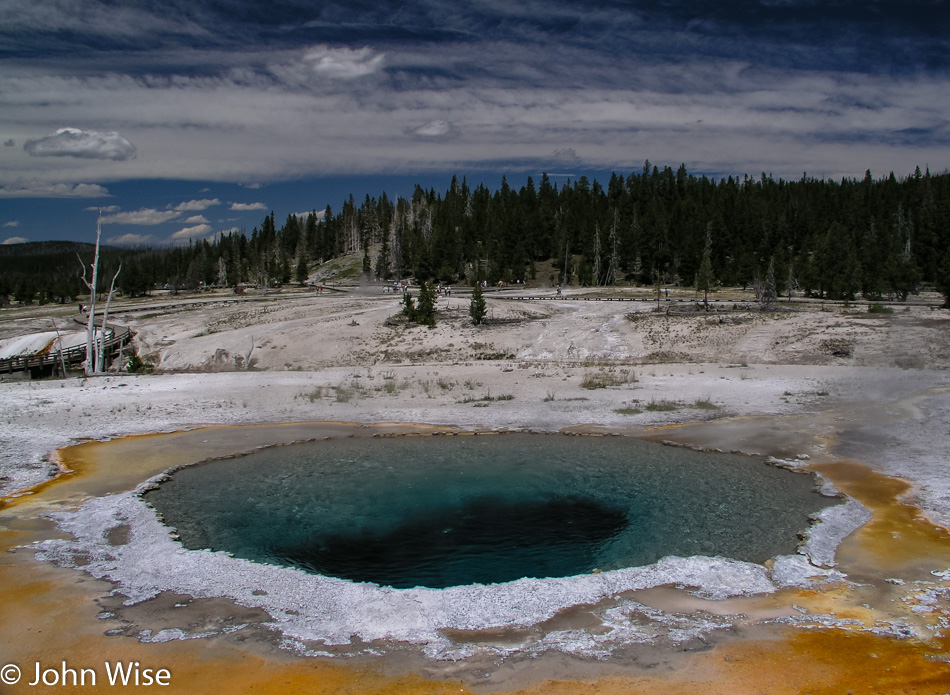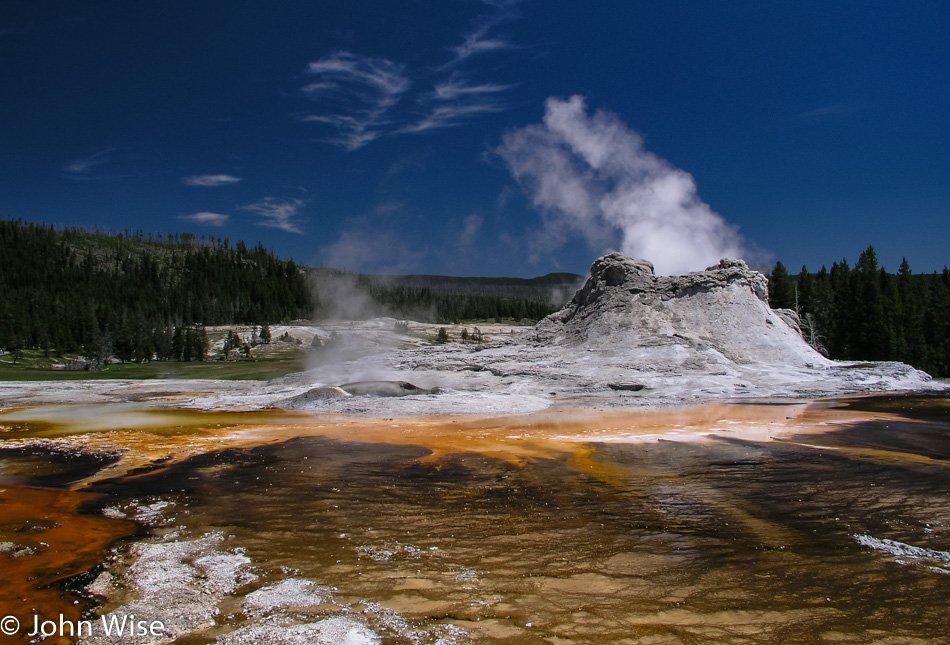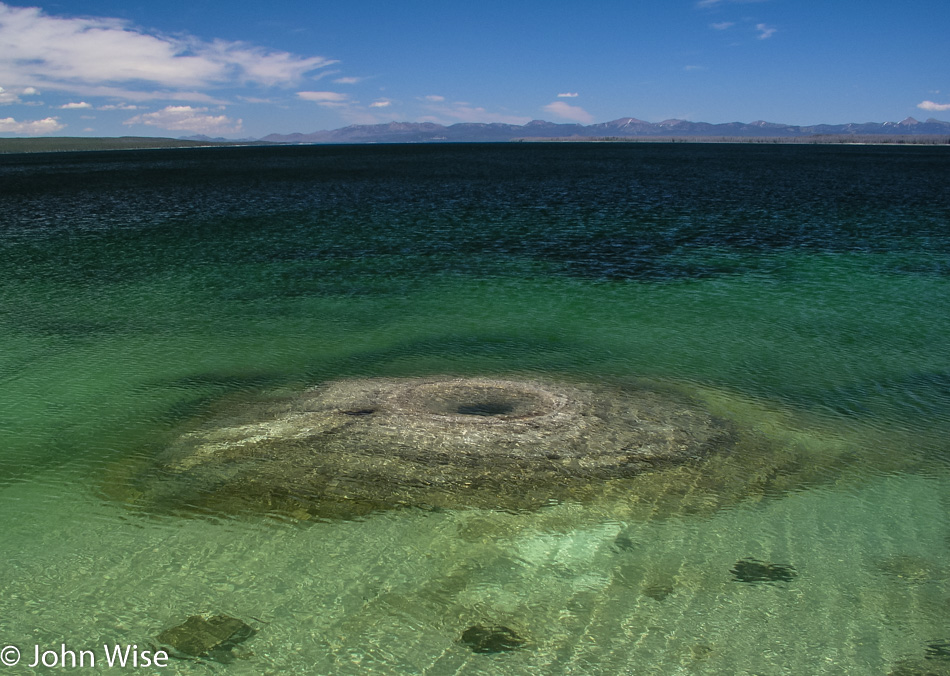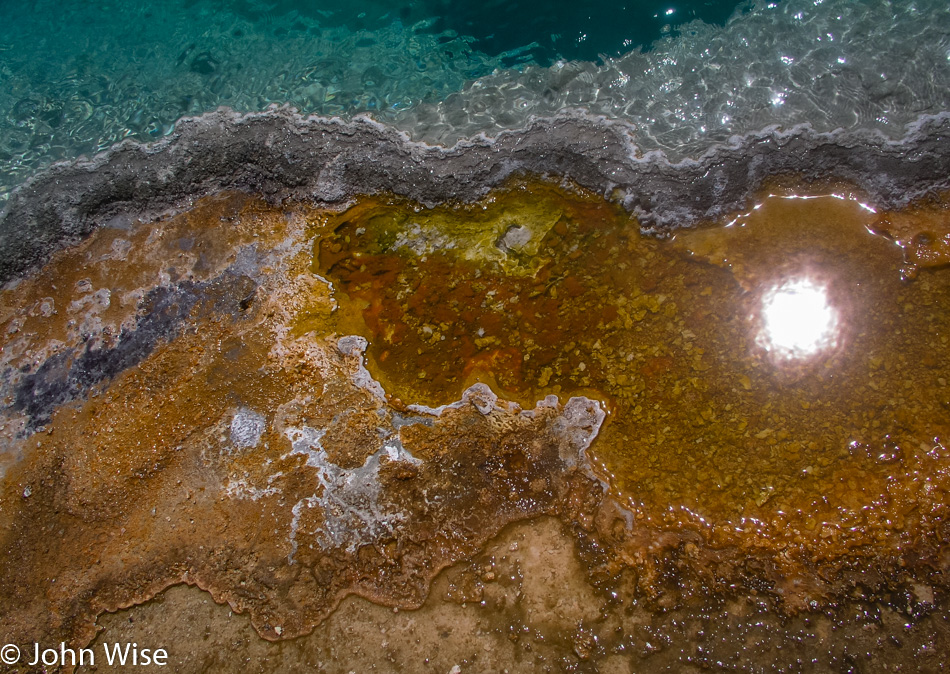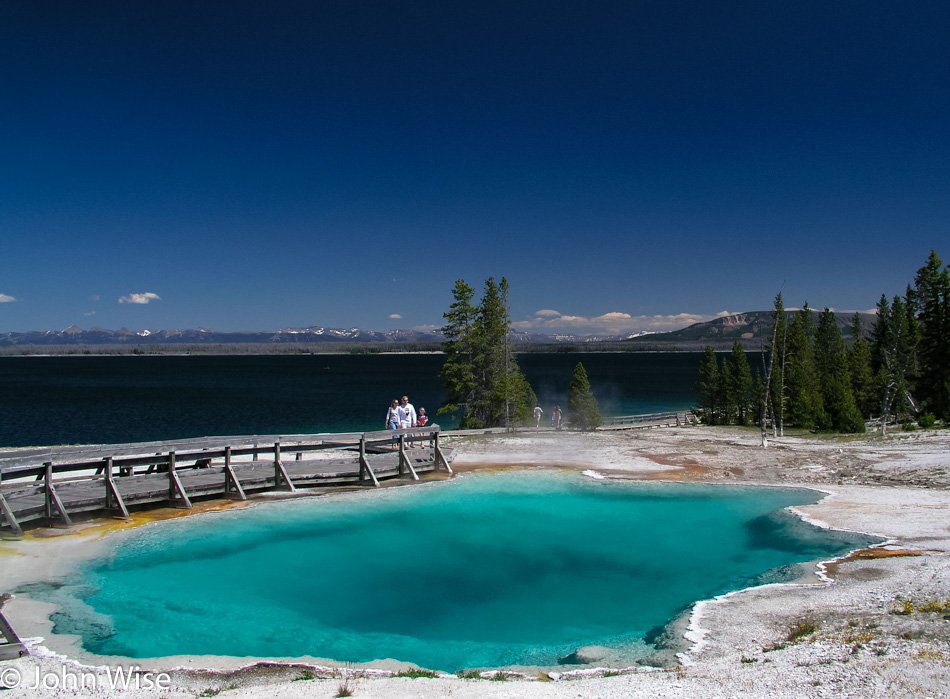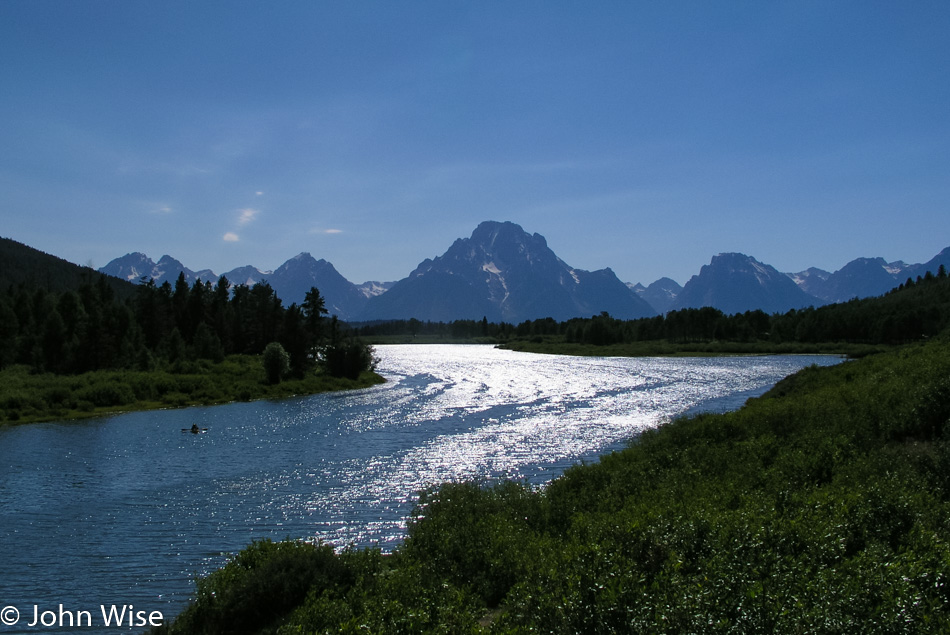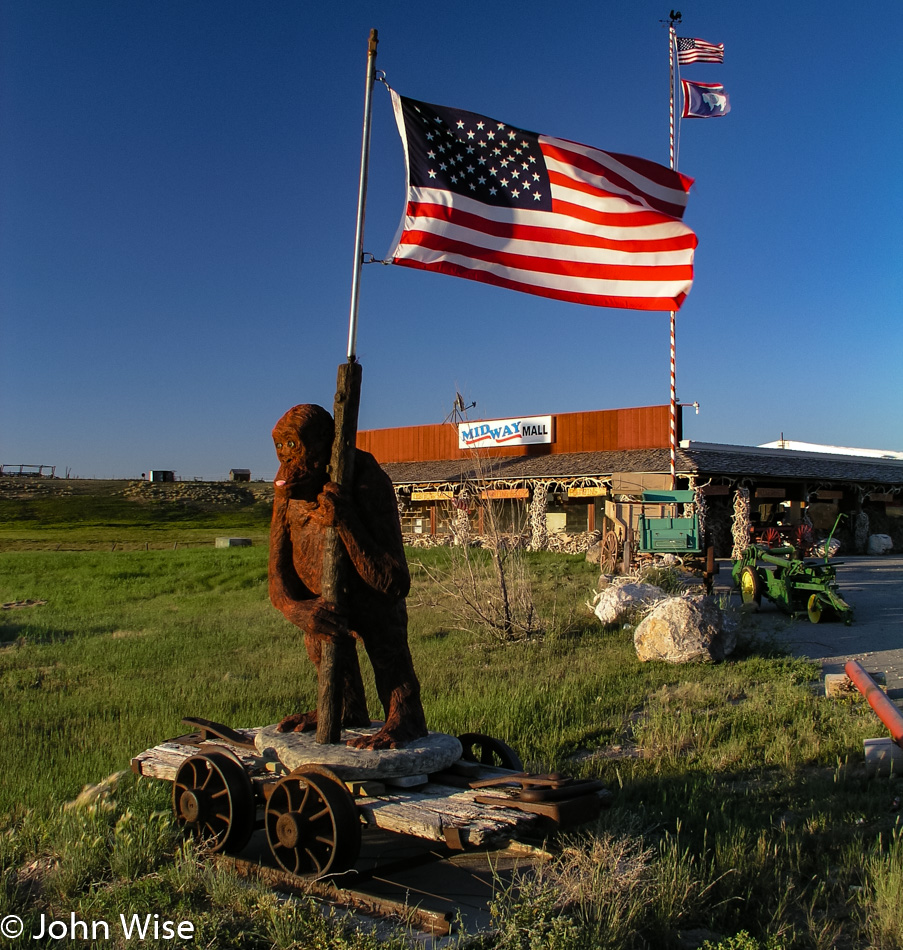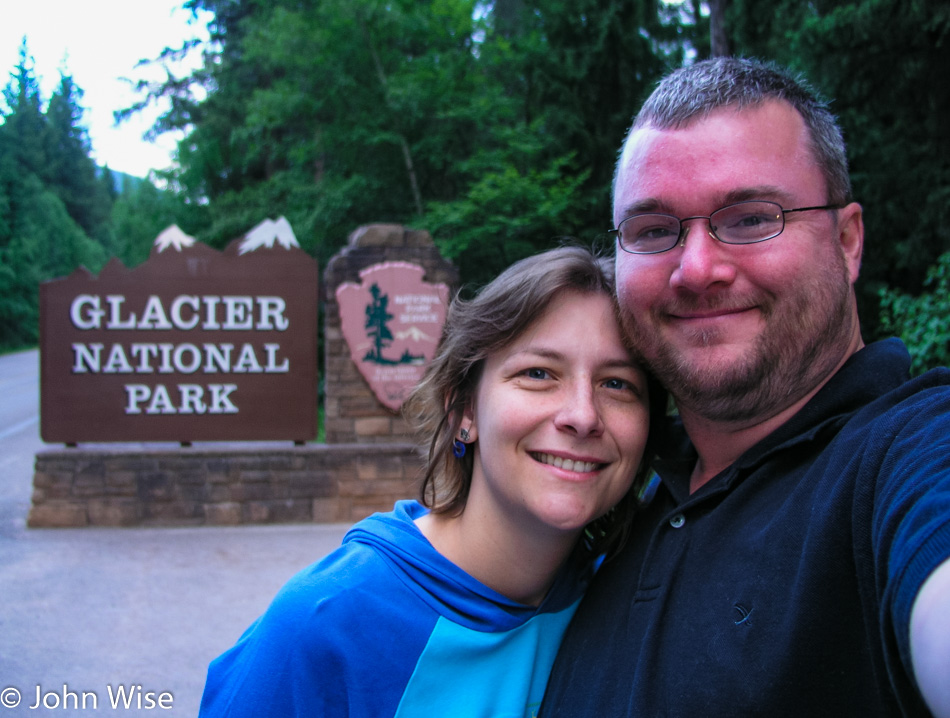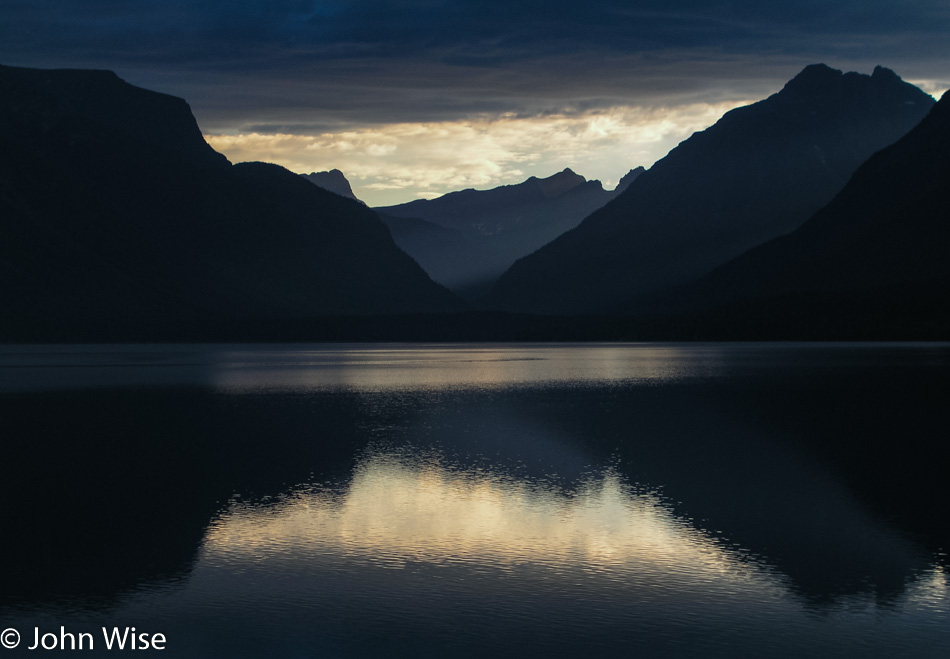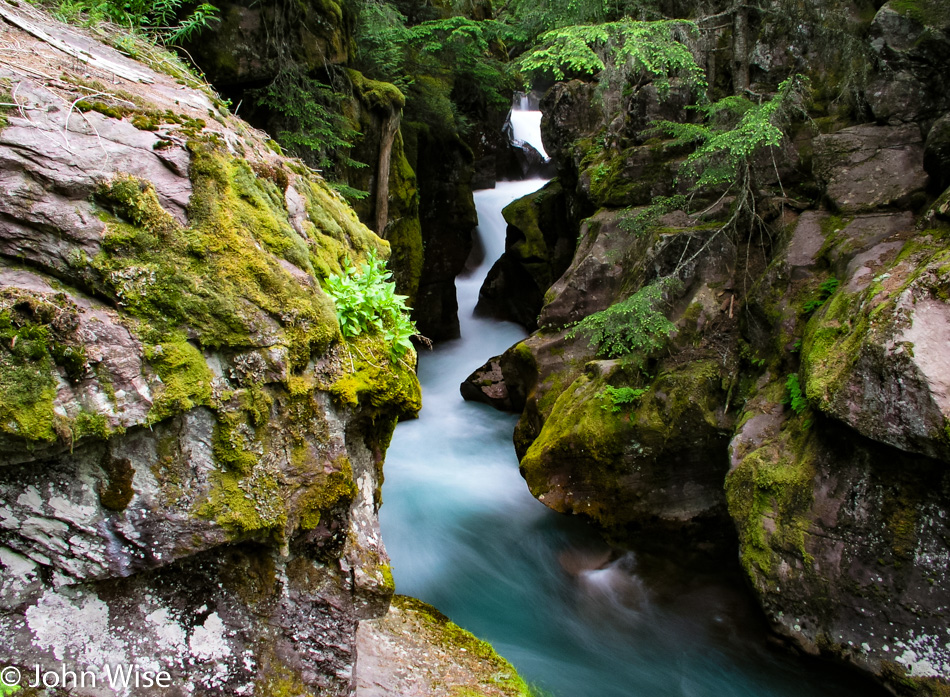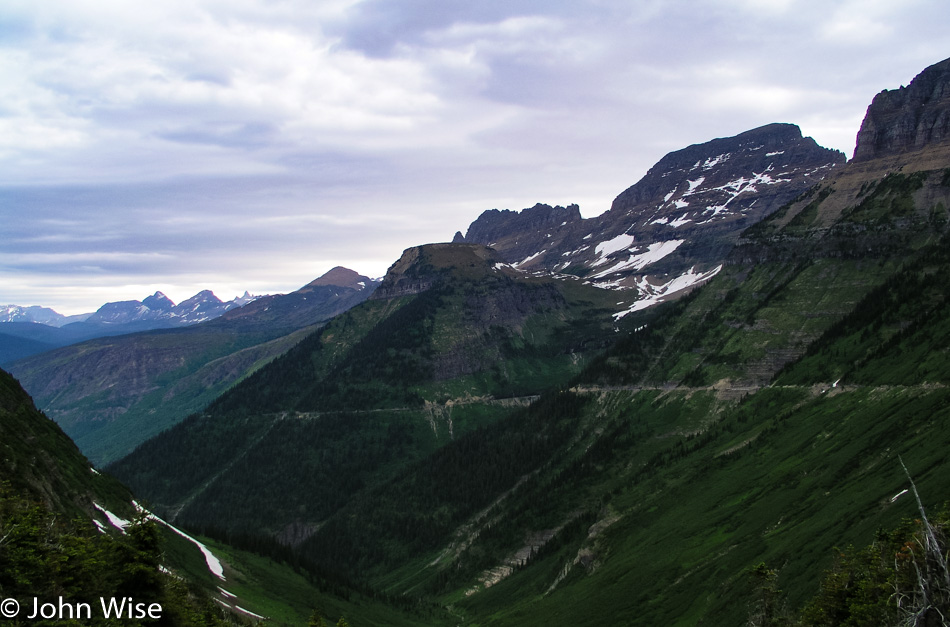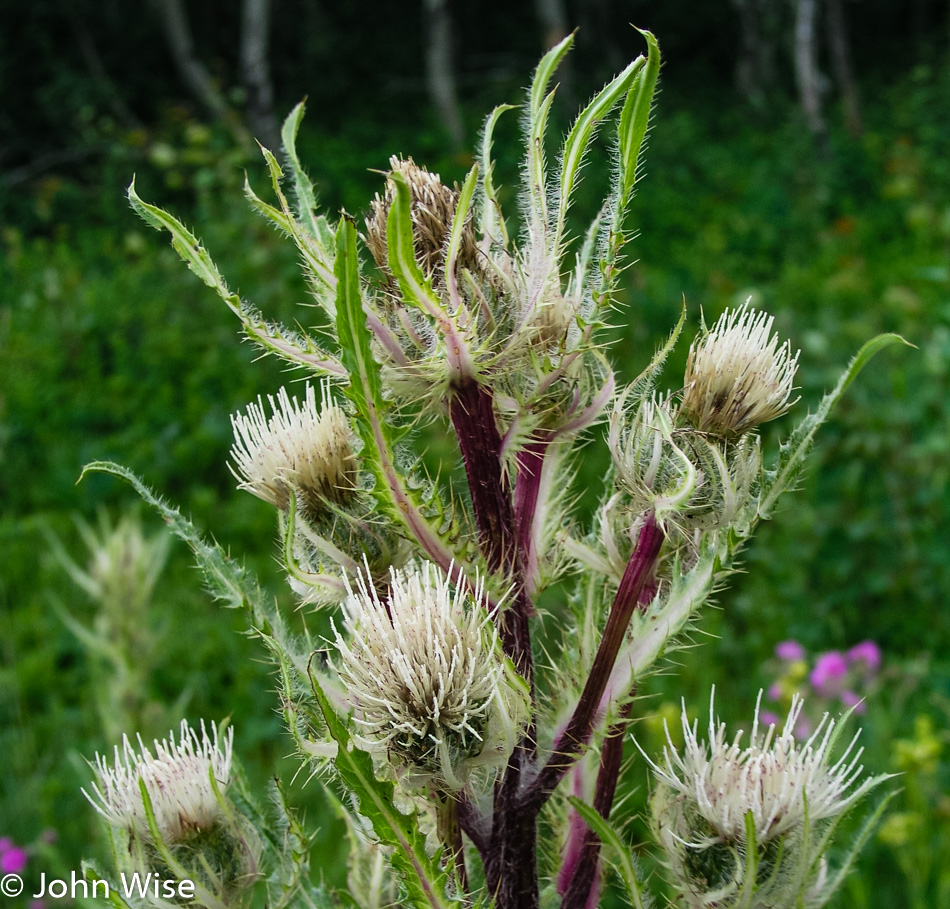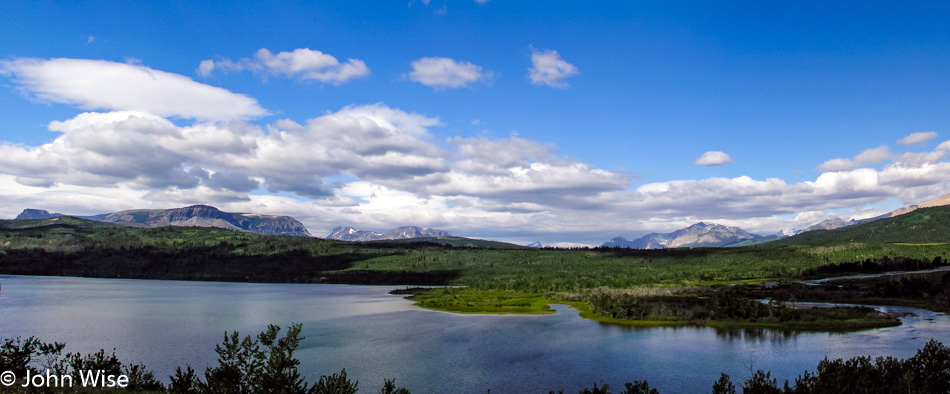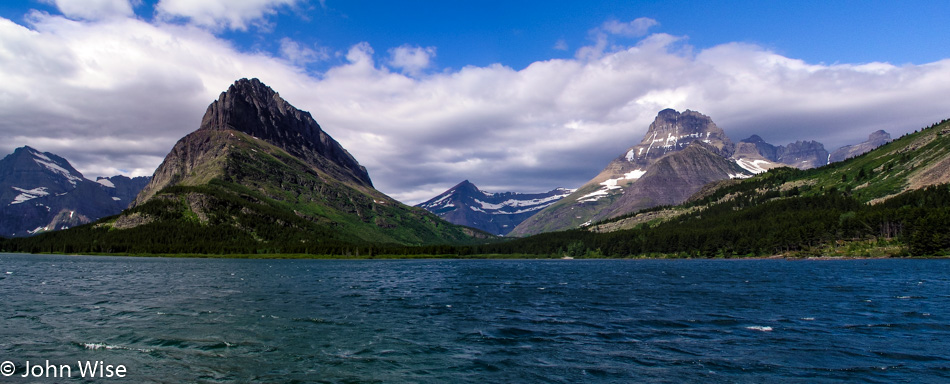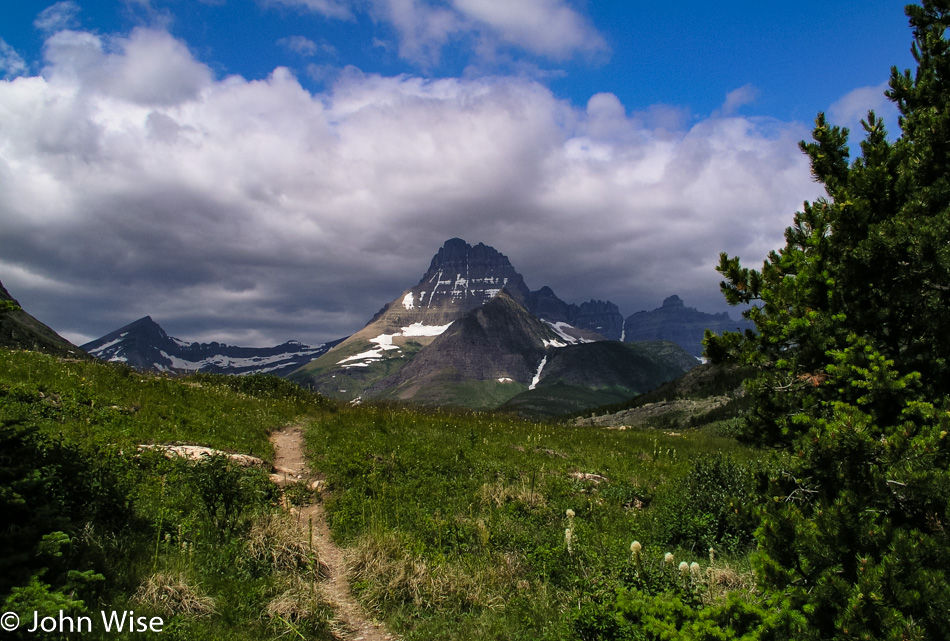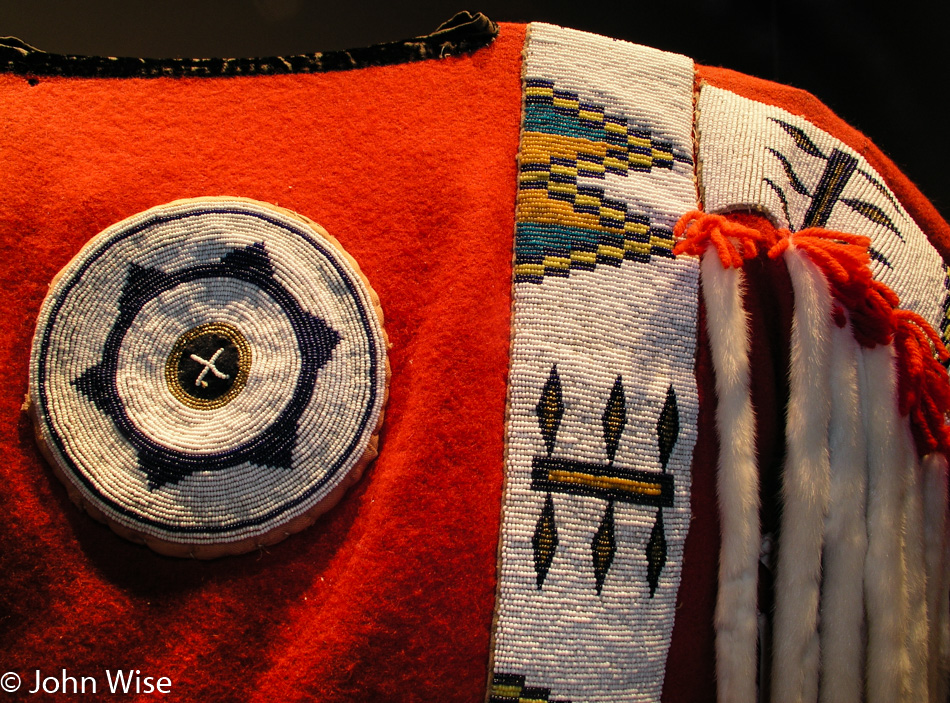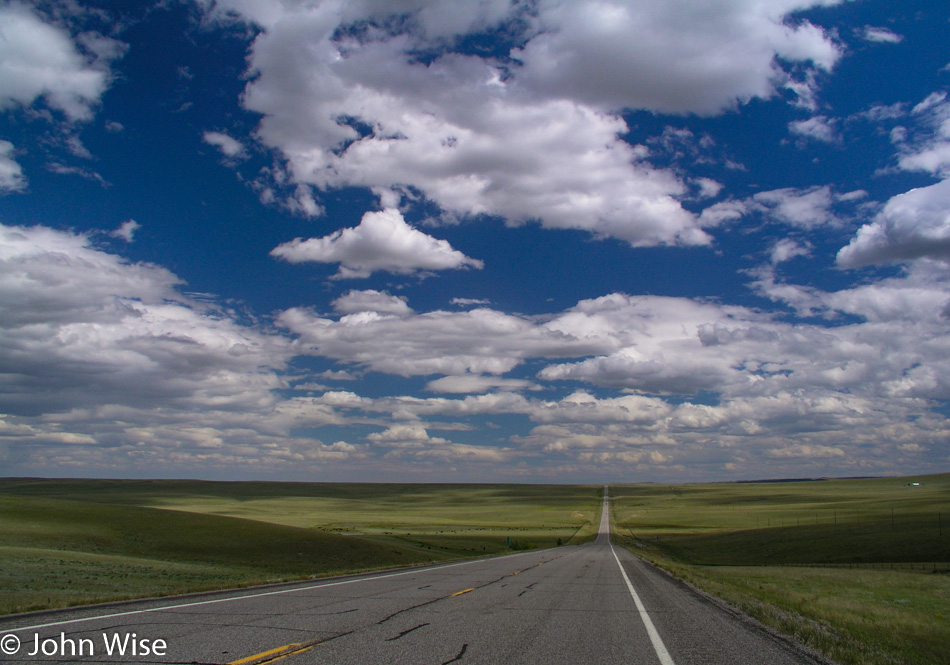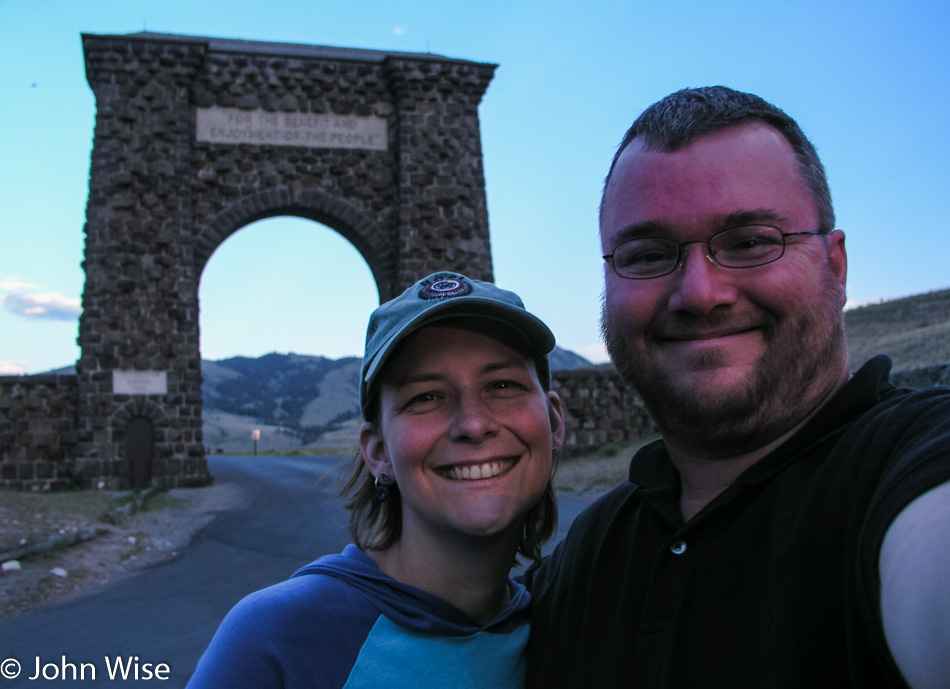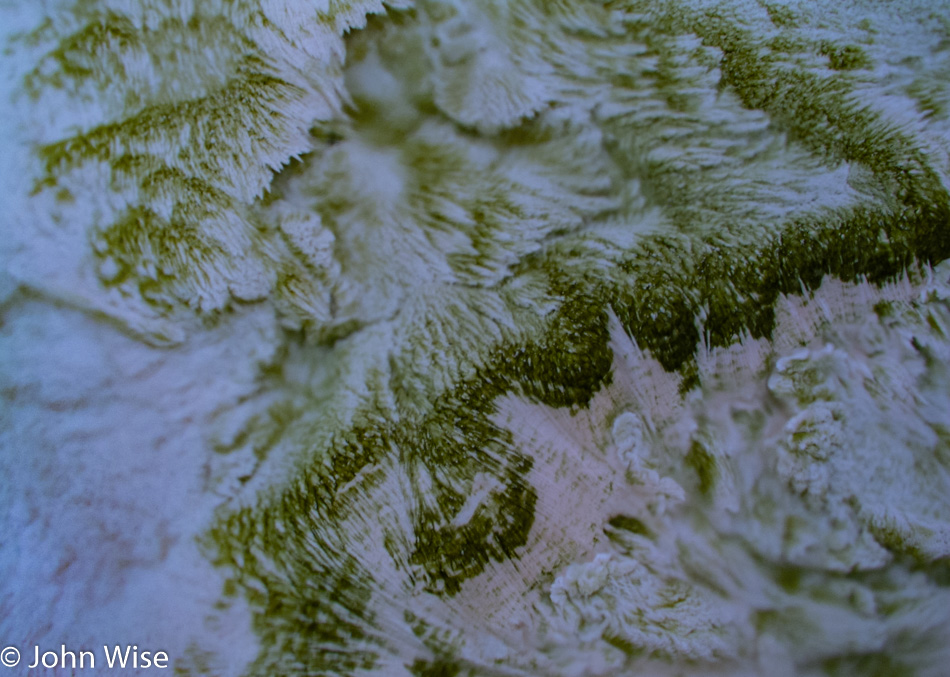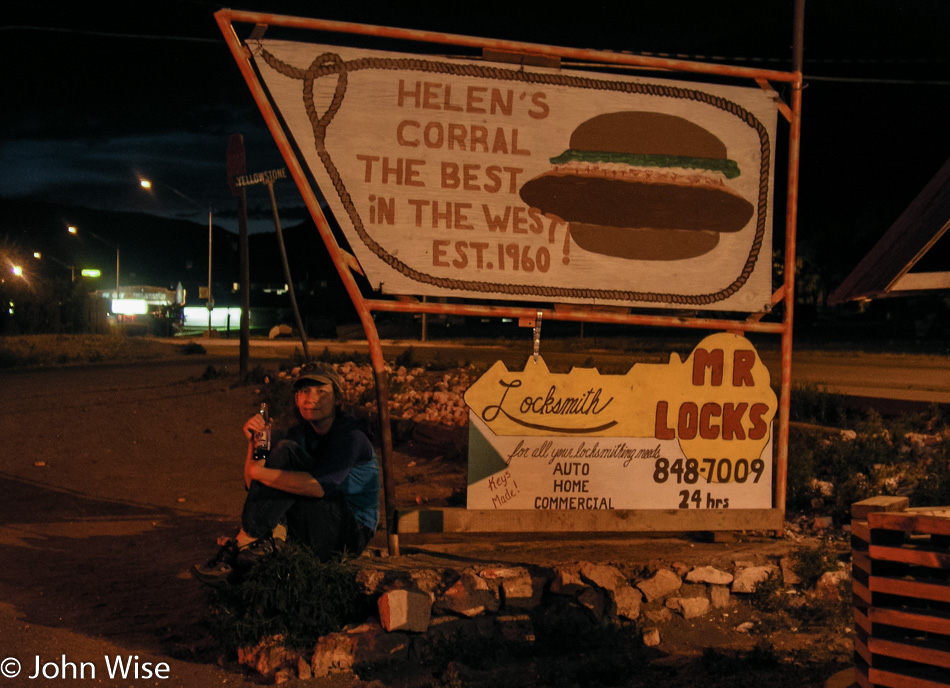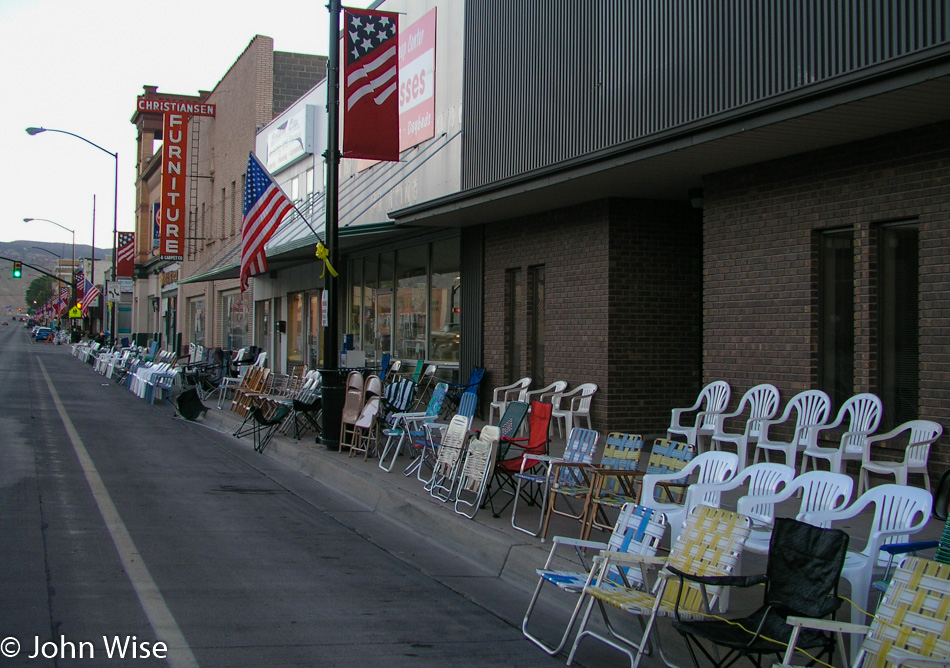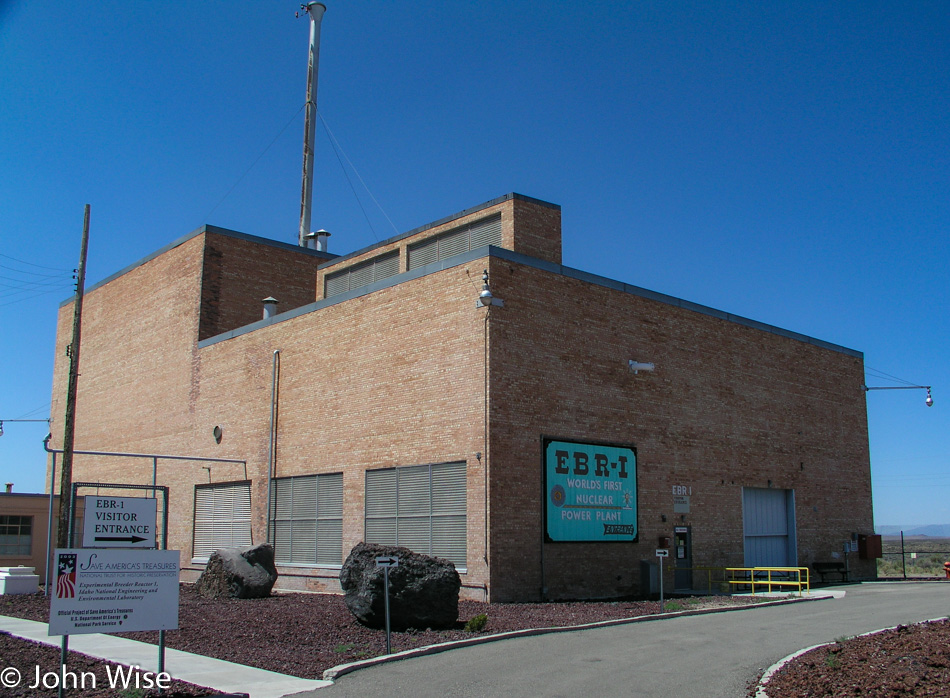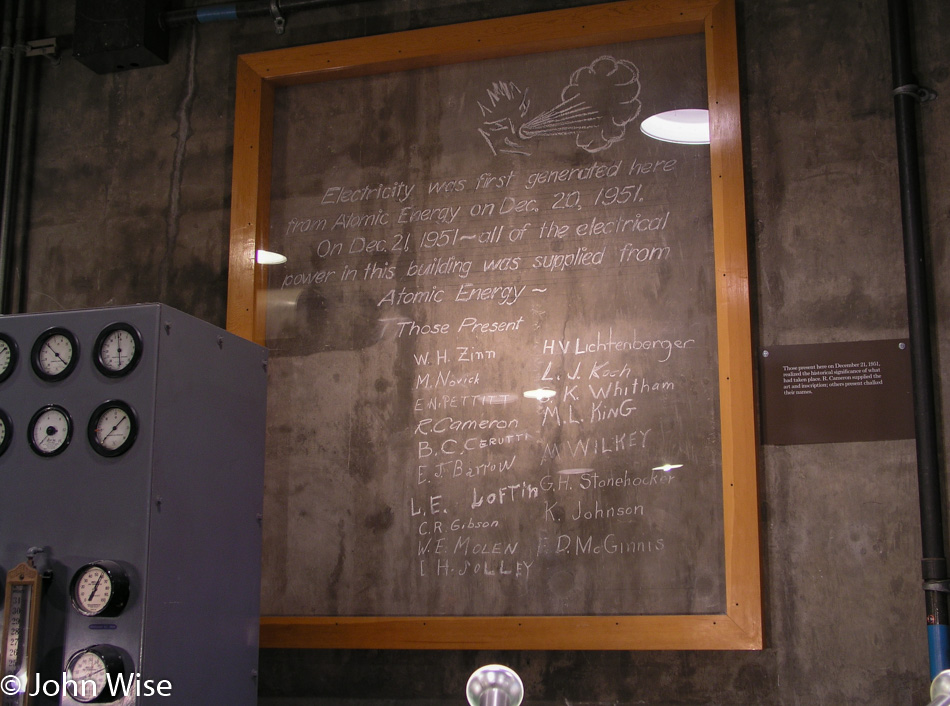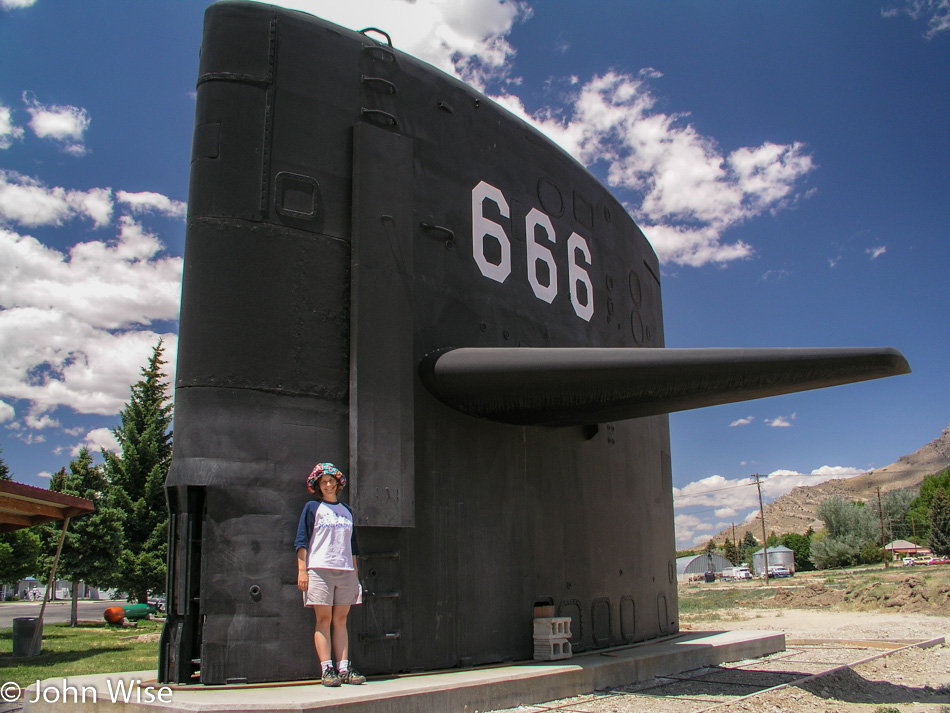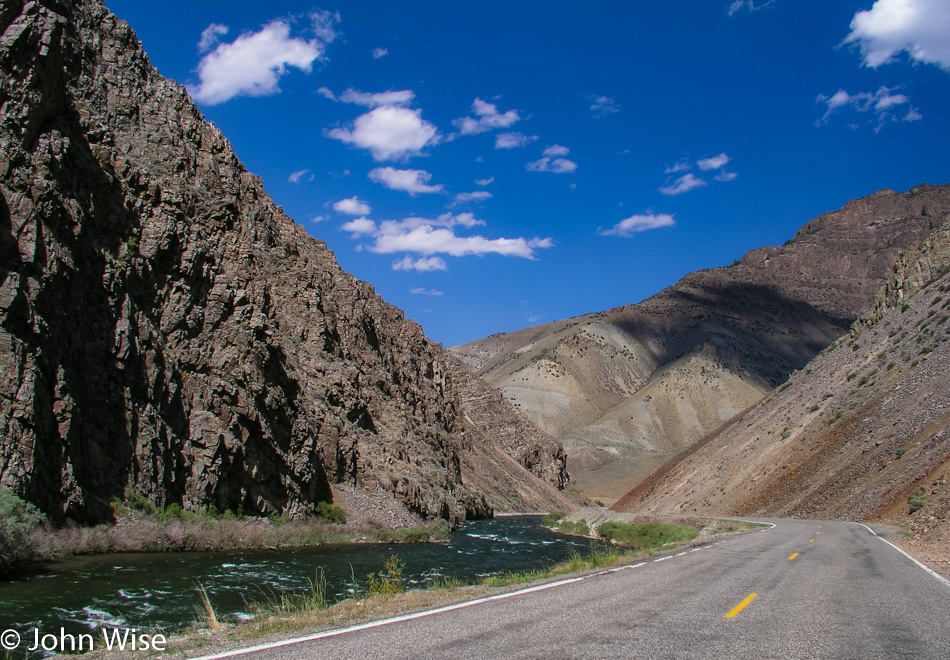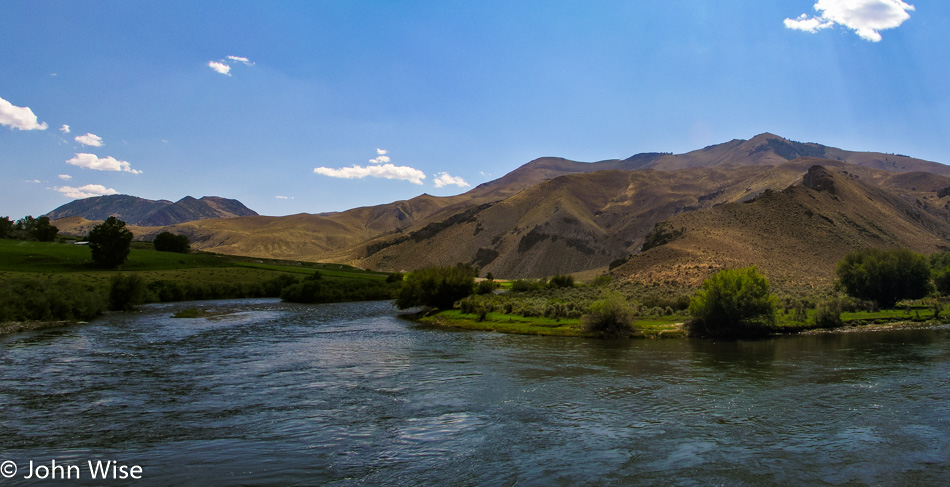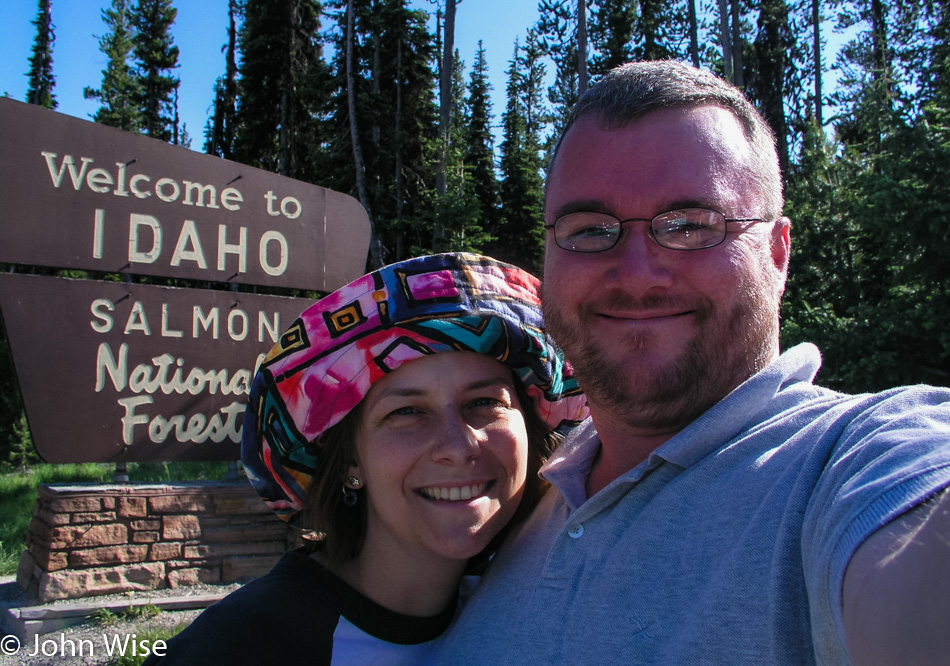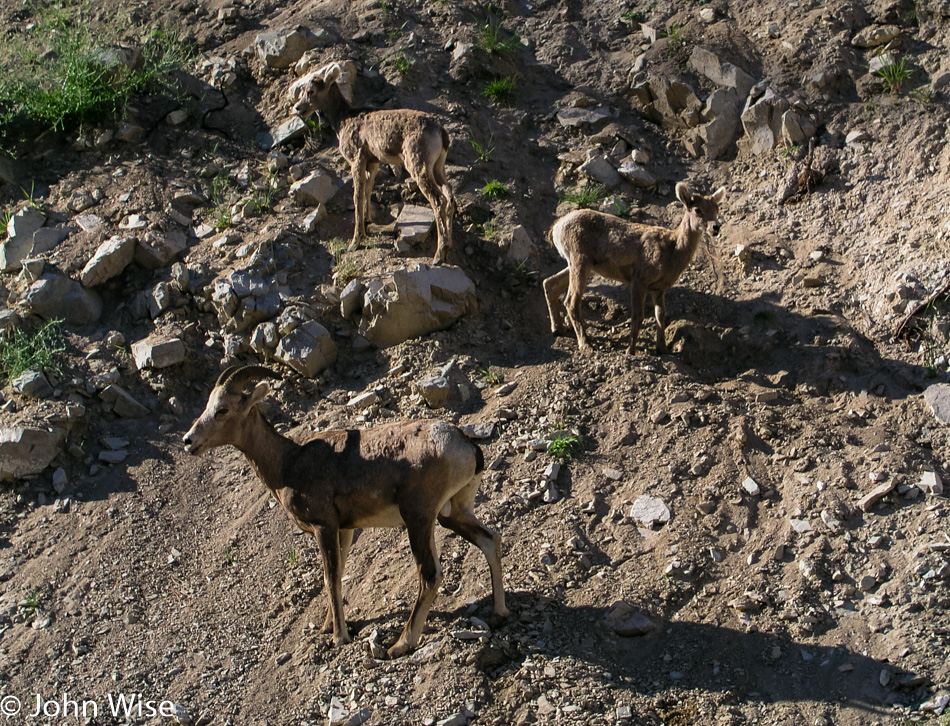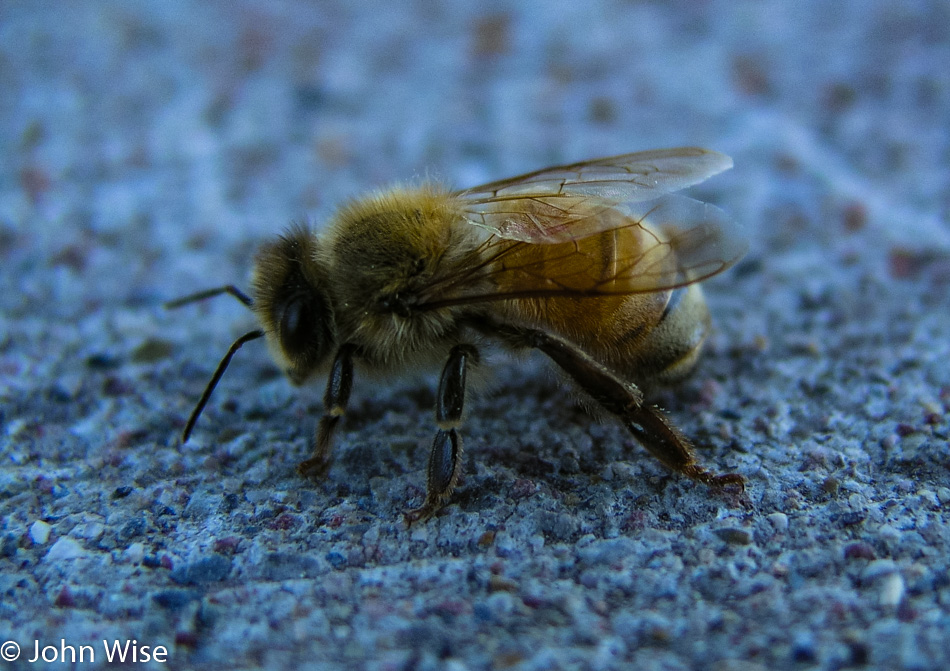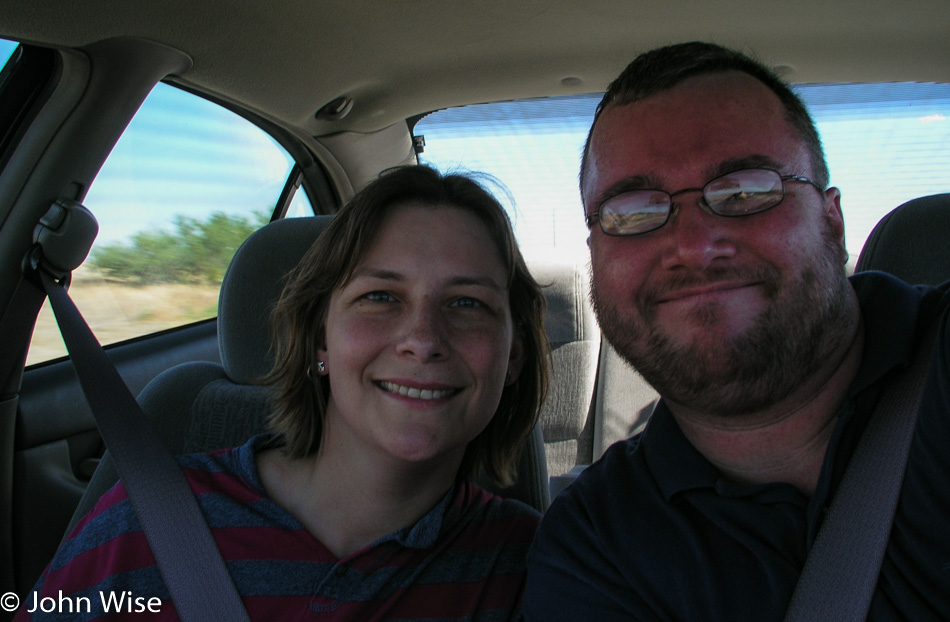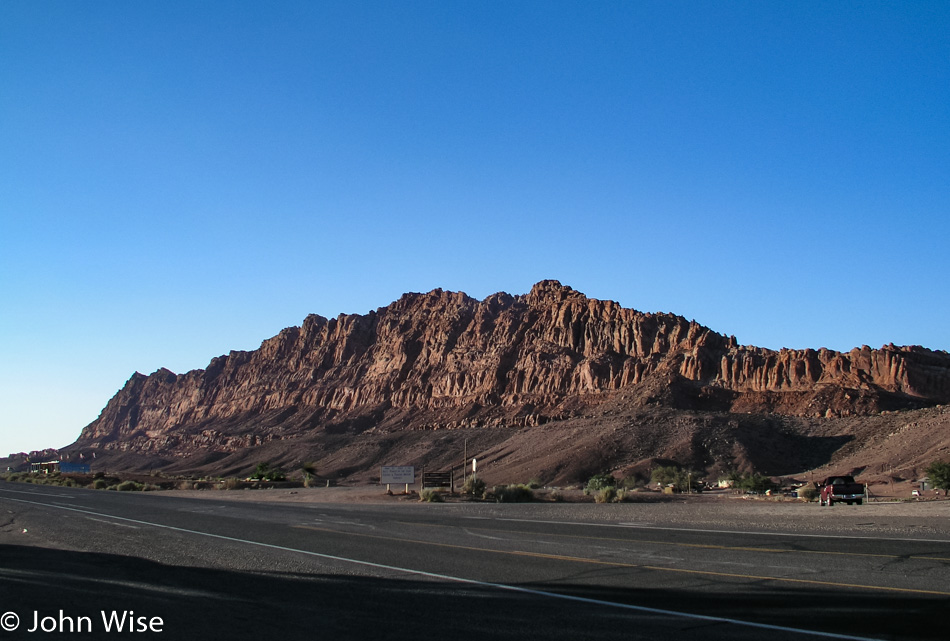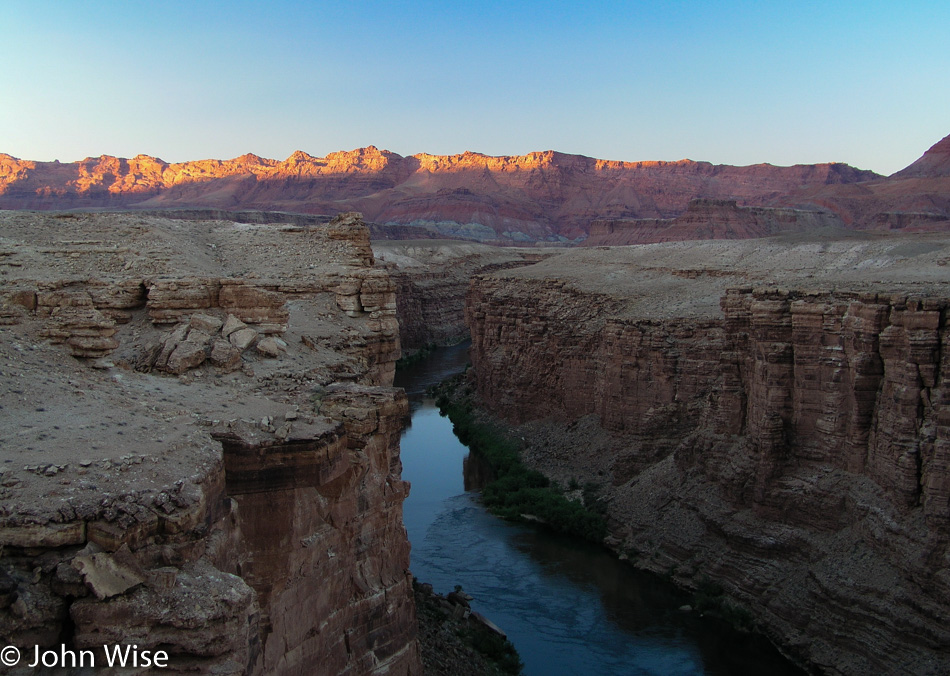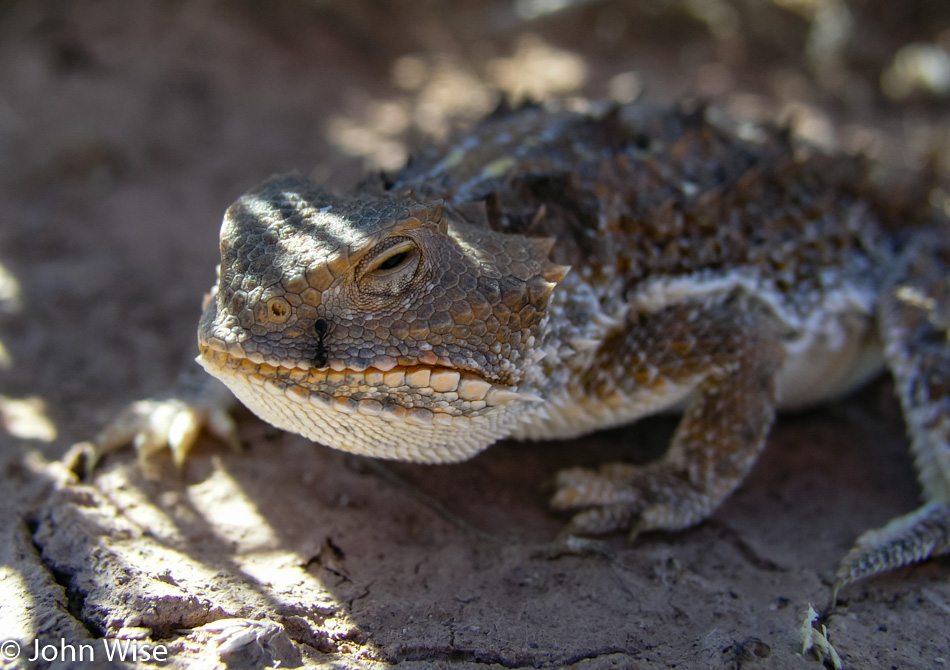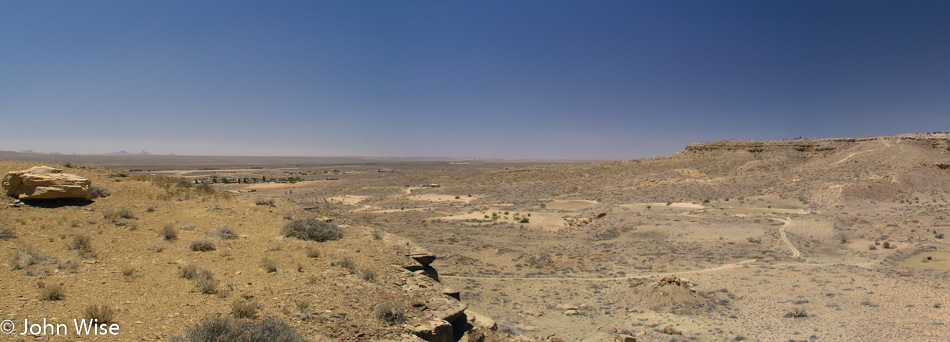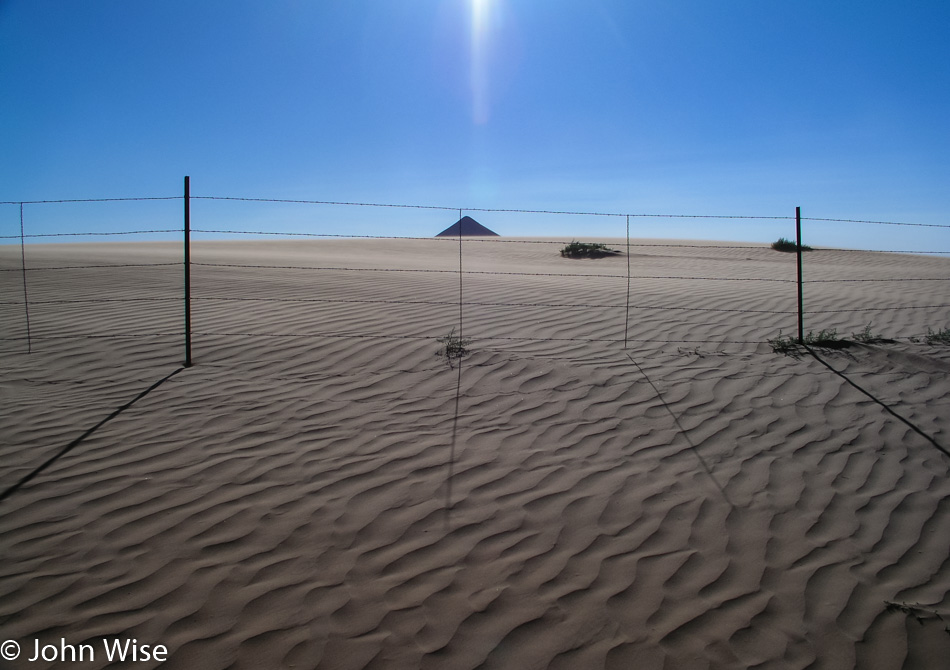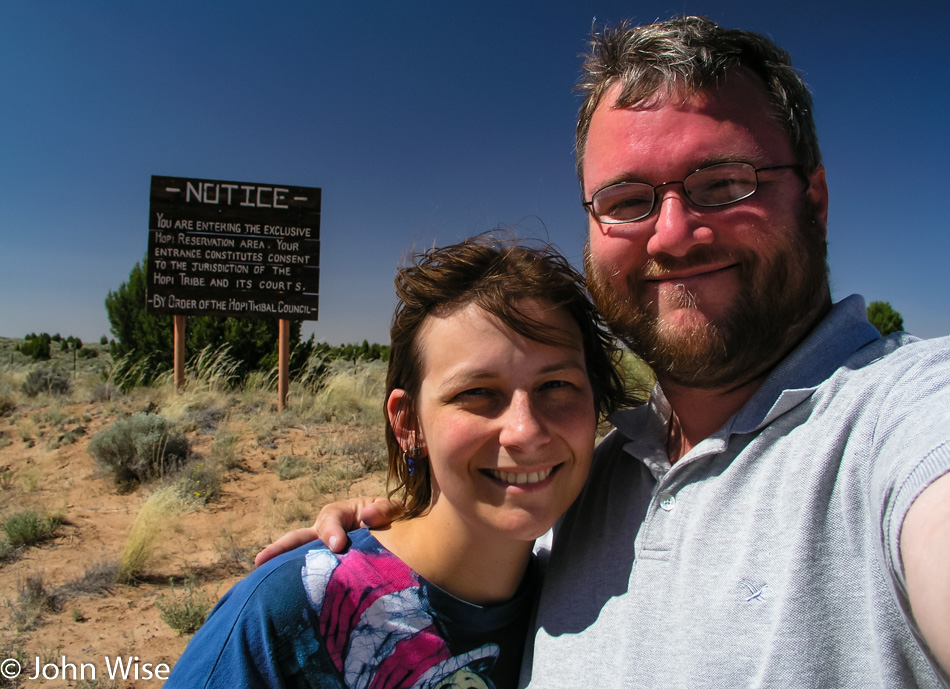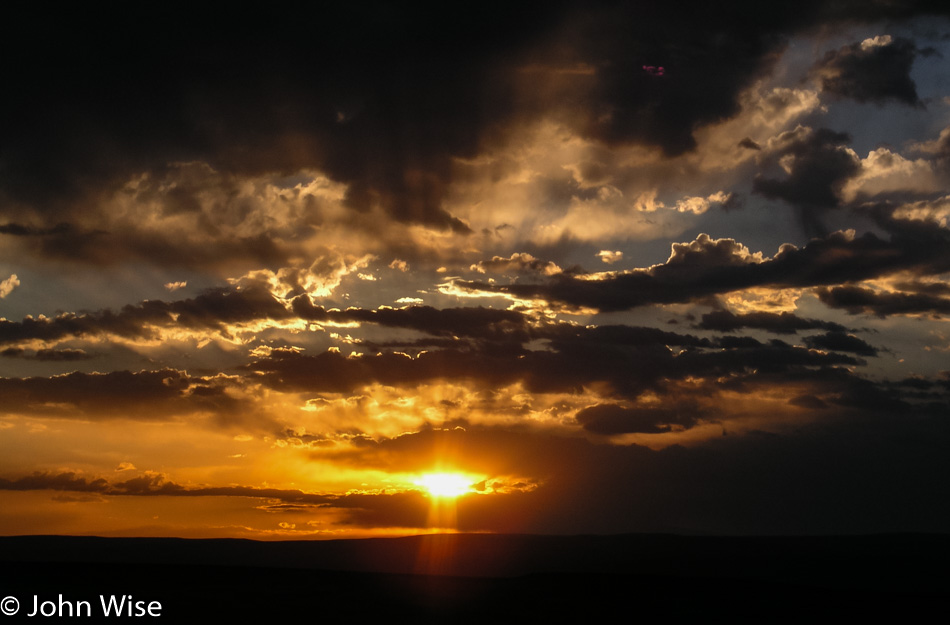
Who among us has never seen a sunrise such as this? To be out West in the mountainous terrain of a place away from cities where a slight rise in elevation can offer us views that stretch for nearly 50 miles is a luxury I suppose few will ever experience firsthand. That rareness should stay with us and not be taken for granted; after all, it was only Caroline and me who were in this location at this particular moment where the sun and clouds would only appear to us in this exact configuration and never again in millions of years could this scene ever be duplicated.
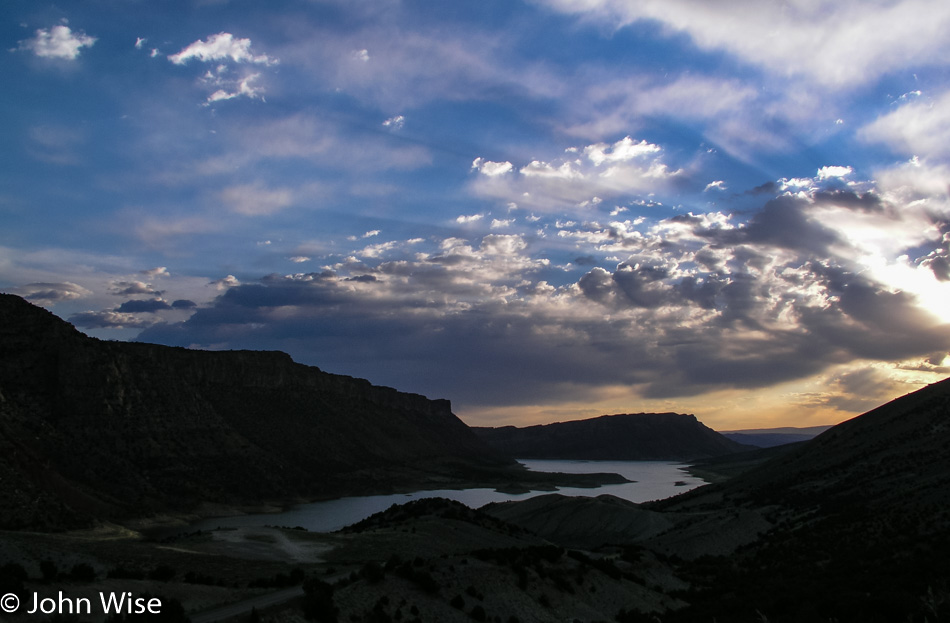
The sun crawls higher, and we drive further south through the Flaming Gorge of Northern Utah. We started the day at 5:30, which means it was only 4:30 in Arizona, where we are headed, but with 860 miles (1,375 km) ahead of us, we’ll need all the psychological help we can find to believe we are getting home at a reasonable hour.
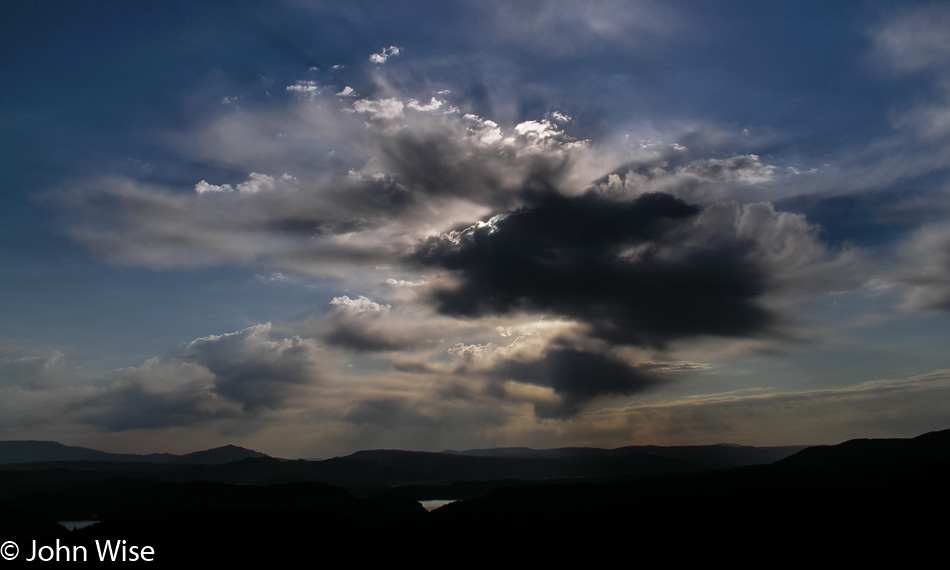
It’s Monday, but it may as well be some anonymous day a couple of hundred thousand years ago where no sign of humanity can be seen across the landscape. No power lines, no contrails, and no skyline in the distance. For a moment, one should find such a place, sit down, and meditate on the idea of being the first human ever to be looking out with the recognition that you might be the first sentient being ever to gaze upon the soil and into the sky with an entire future ahead of yourself and how you might want to shape your path.
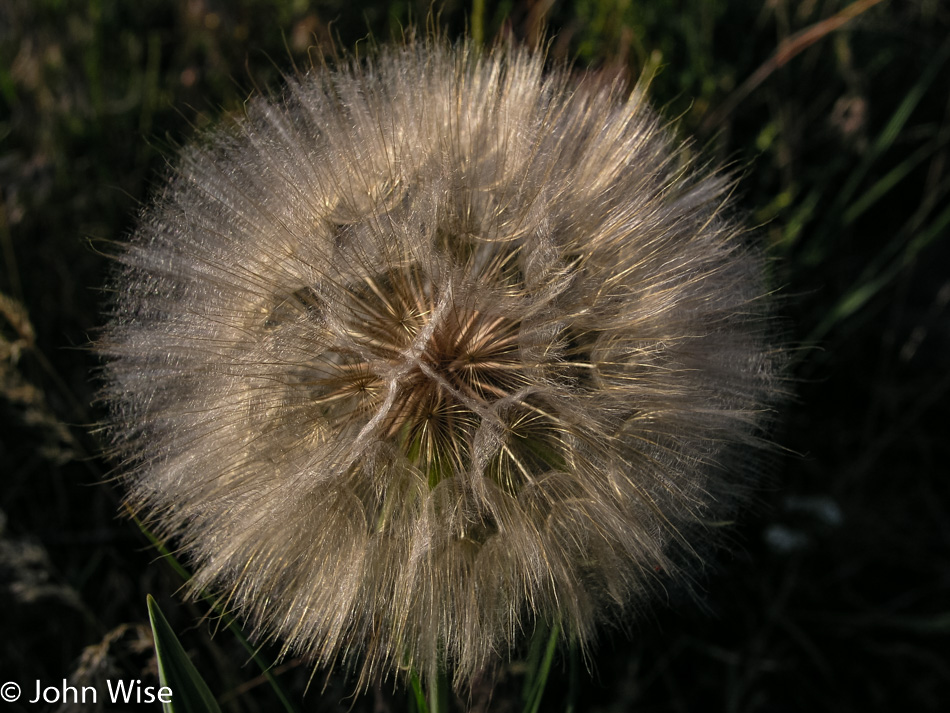
A wish, okay, so it’s a dandelion, and maybe I’m “too old” to play such things, but so what? I wish to see a dinosaur.
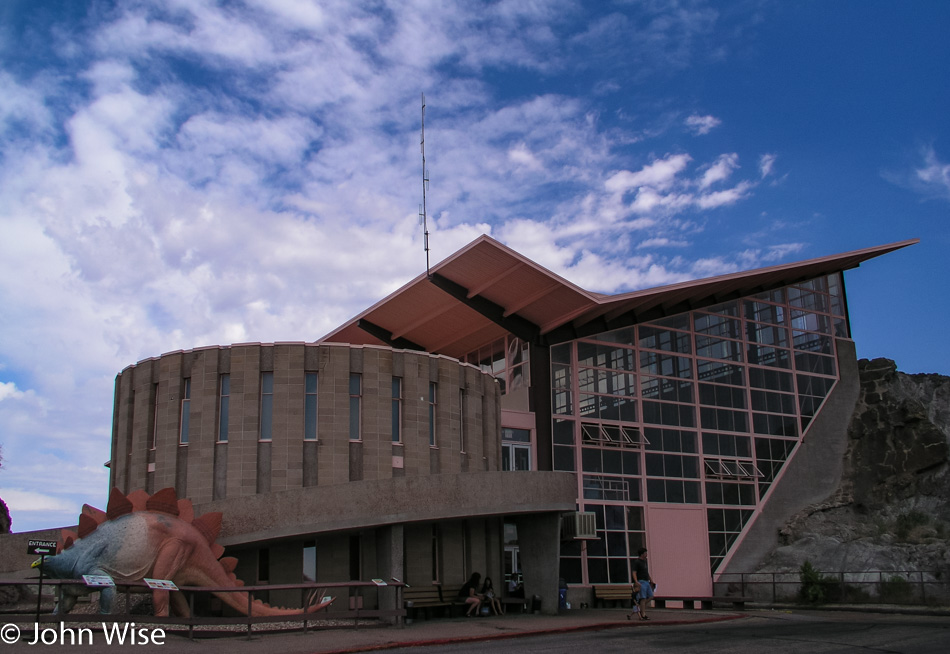
Wish granted here at the Dinosaur National Monument in Utah and Colorado. Millions of years ago, a river ran through the area, and with it, dead dinosaurs would drift downstream to be buried beneath the accumulating sediments.

This upturned river bed is the main attraction of the park. Look at the picture above this one, and you can see that the building was placed directly over the riverbed that now sits at a nearly 90-degree angle.
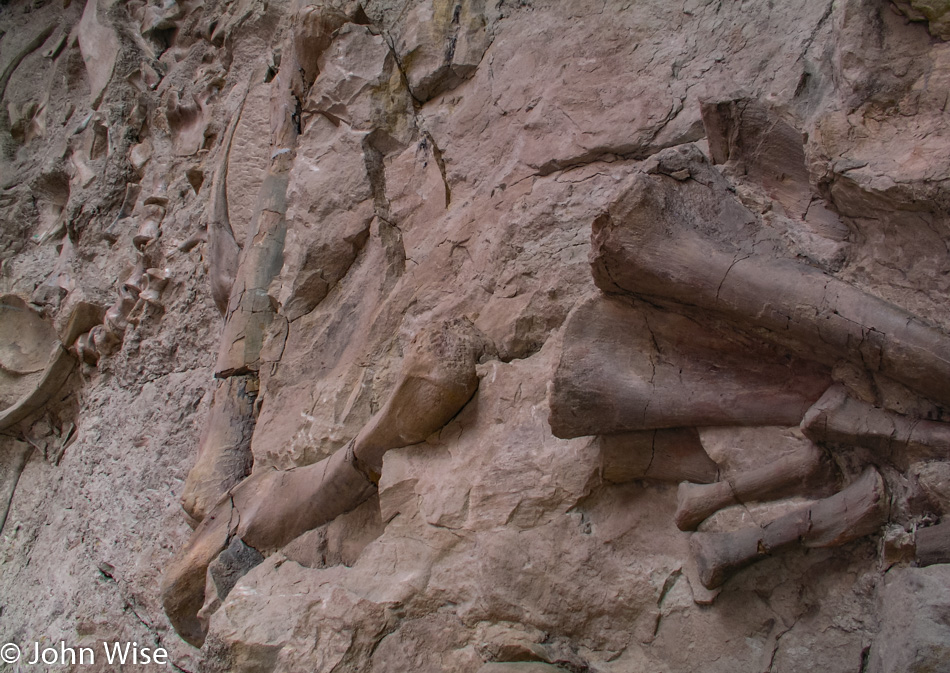
There’s a whole lot of wow factor for kids of all ages who come to gawk at dinosaur bones.

Because the road isn’t long enough already, we opt for a slight detour through Western Colorado to see what things look like out this way.
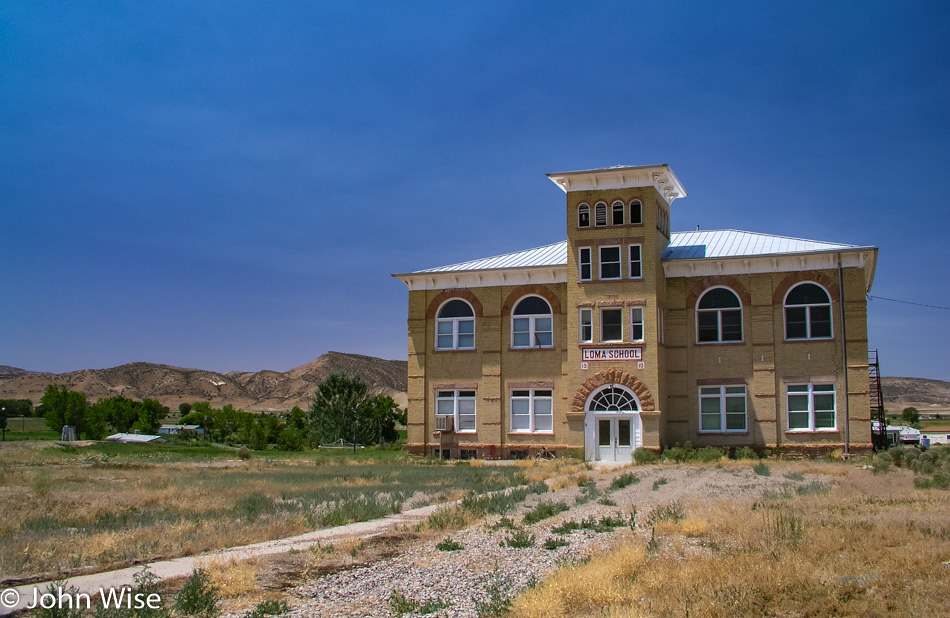
A beautiful old and abandoned school built in the early 1900s. Nothing really significant about it; it was just nice to look at.
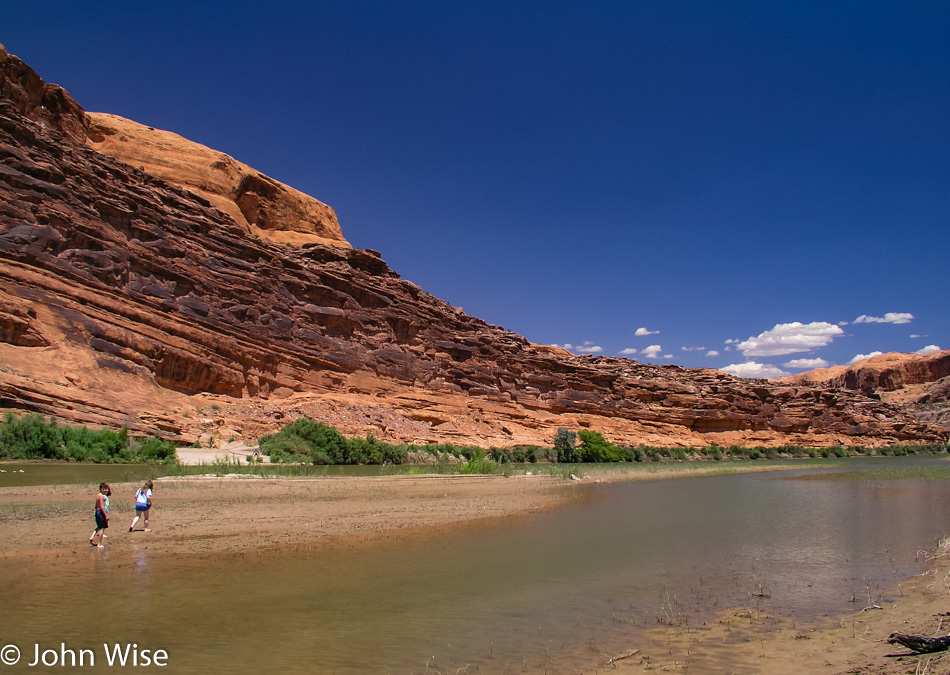
Scenes hinting at getting close to home. These kids are playing on a sandbank in the Colorado River on the outskirts of Moab, Utah.
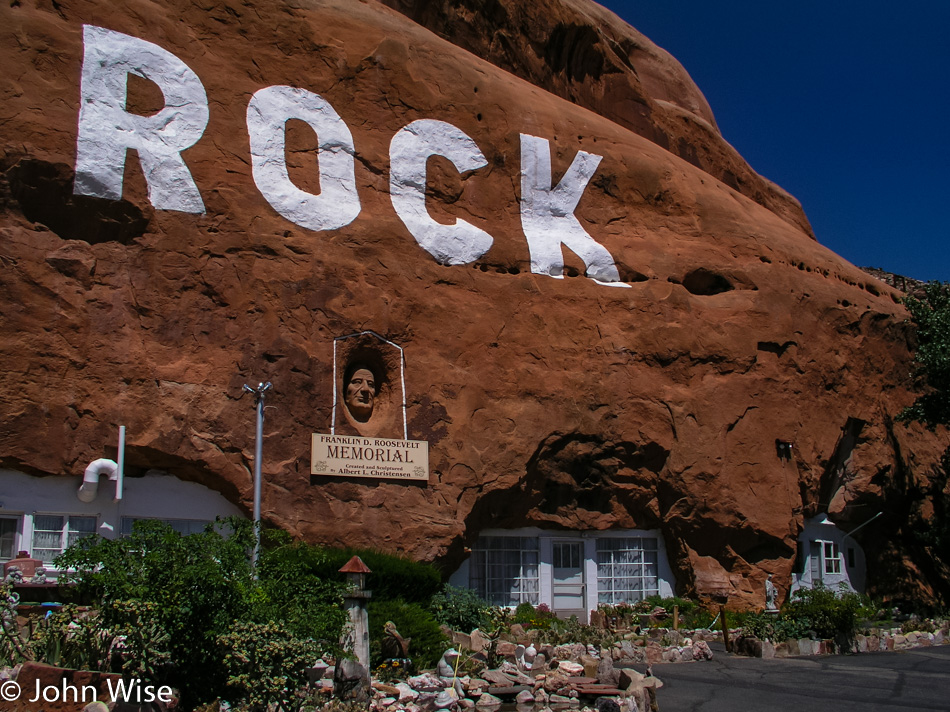
Hole N” The Rock still isn’t being visited, though it was just this past September that I was saying that someday we need to stop here. Maybe next year.
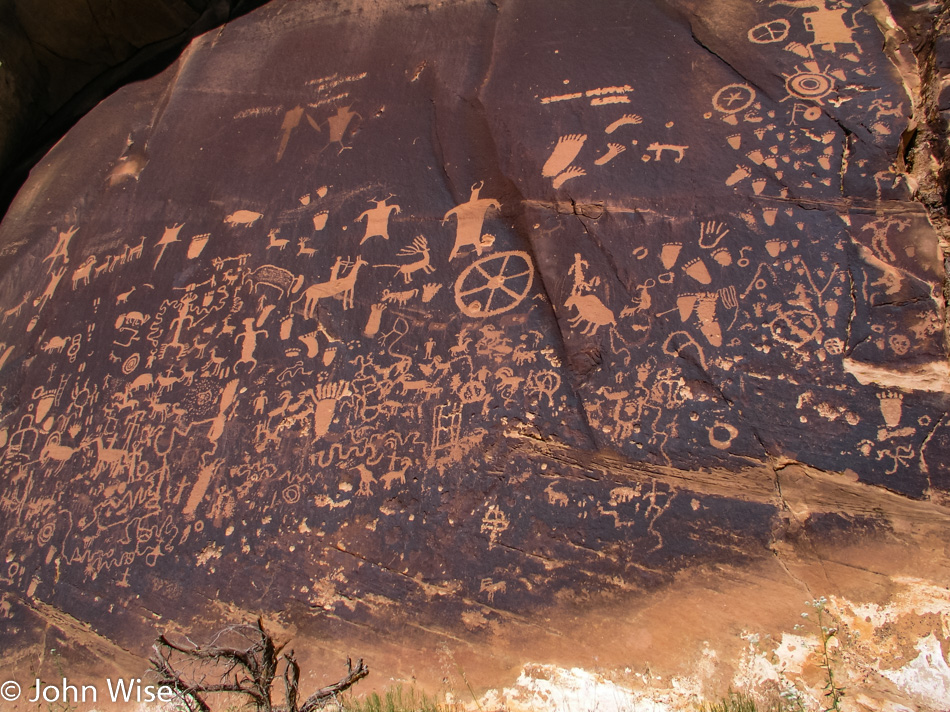
Seems like yesterday that we were here and not three years ago, but it was another September trip into the area back in the year 2000 that we first laid our eyes on this incredible panel of petroglyphs.

Fond memories of a great dinner will forever stay with us from that night years ago when we stayed in Bluff and walked over for a brilliant Native American meal.
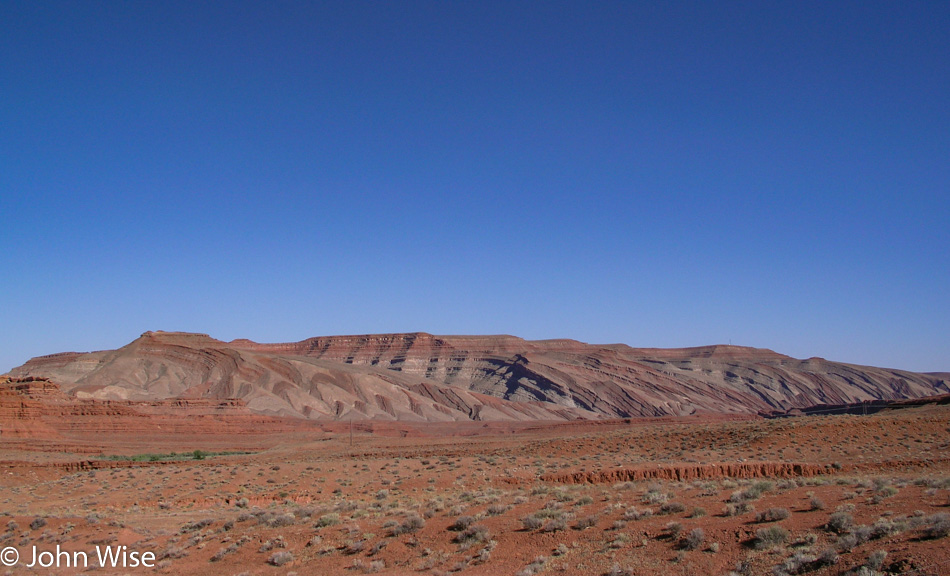
Caroline blurts out, “….the layers” every time we pass this.
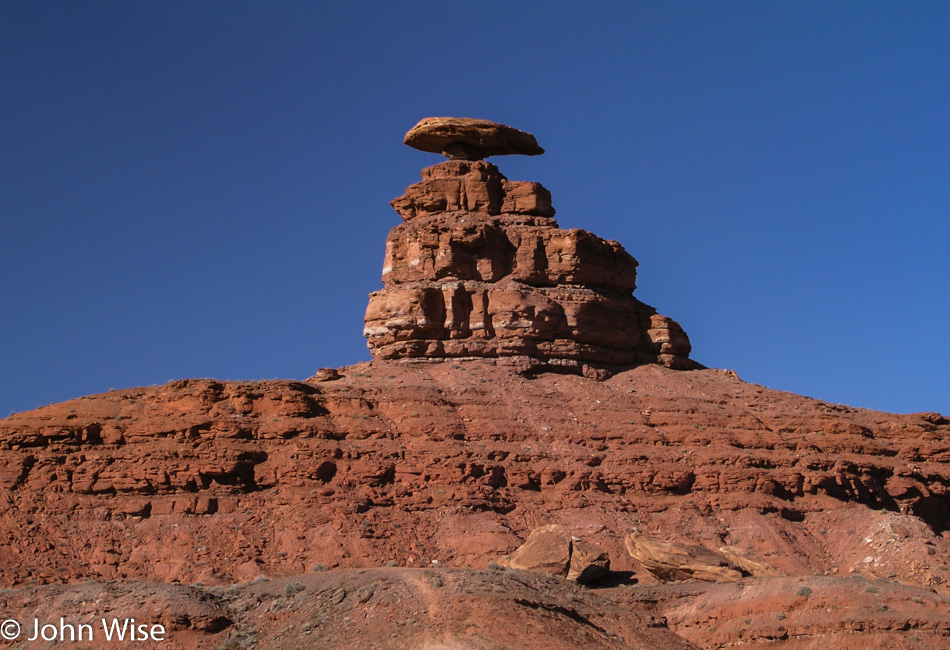
This is why the tiny community of Mexican Hat, Utah, is called Mexican Hat.
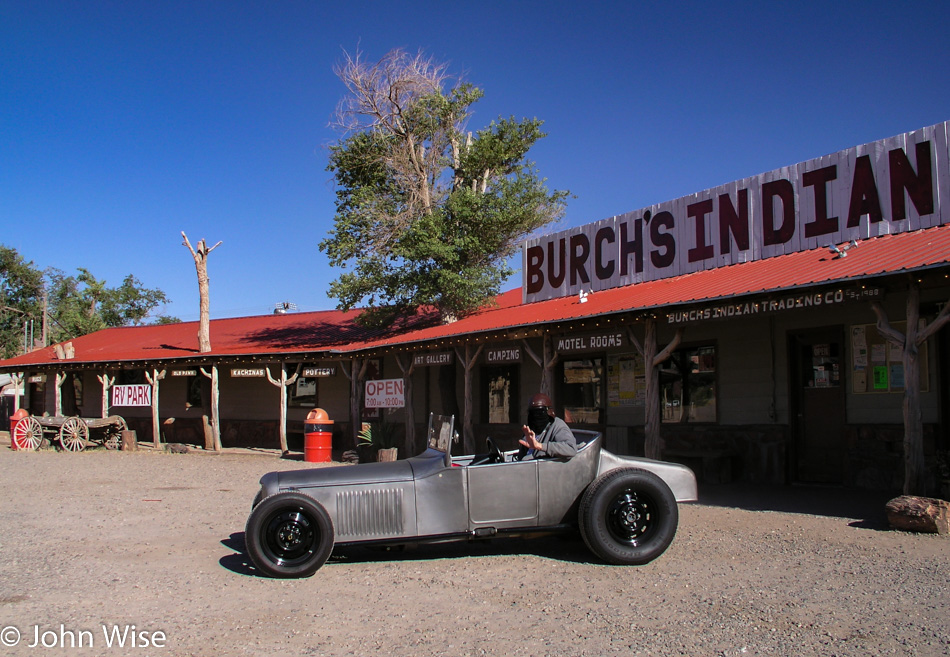
This sight had me thinking “Texas Chainsaw Massacre” thoughts for a moment, but I reassured myself and Caroline that the black cloth draped over his face offered up some protection against the bugs that would otherwise splatter on his face. By the way, we are in Mexican Hat proper, and if the Mexican Hat Lodge swinging BBQ was working at this time of day, I wouldn’t care what time we’d get home; I’d be eating a ribeye right about now.
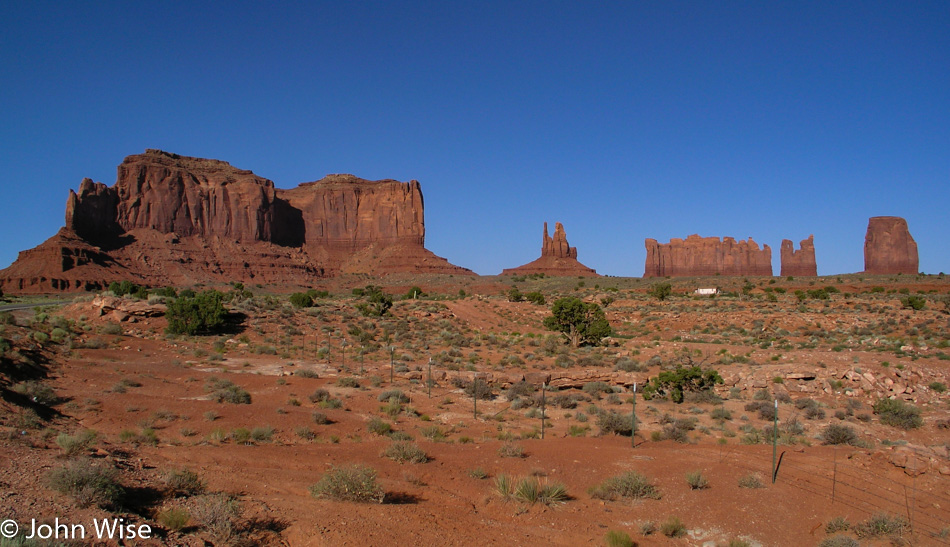
We are just about to pass back into Arizona to finish our drive home, and this final glance at Monument Valley will be the last photo of the day and of this five-day race to the Canadian border and back. Though we spent a considerable amount of time in the car, we gained thousands of indelible impressions that work to cement our memories of how beautiful the wildlands of this country are. We arrived home an hour before midnight after driving 3,147 miles (5,078 km), dragged what we could upstairs, and instead of falling immediately to sleep, we checked out some of the photos from the trip. This has been a great way to celebrate Independence Day in America.

